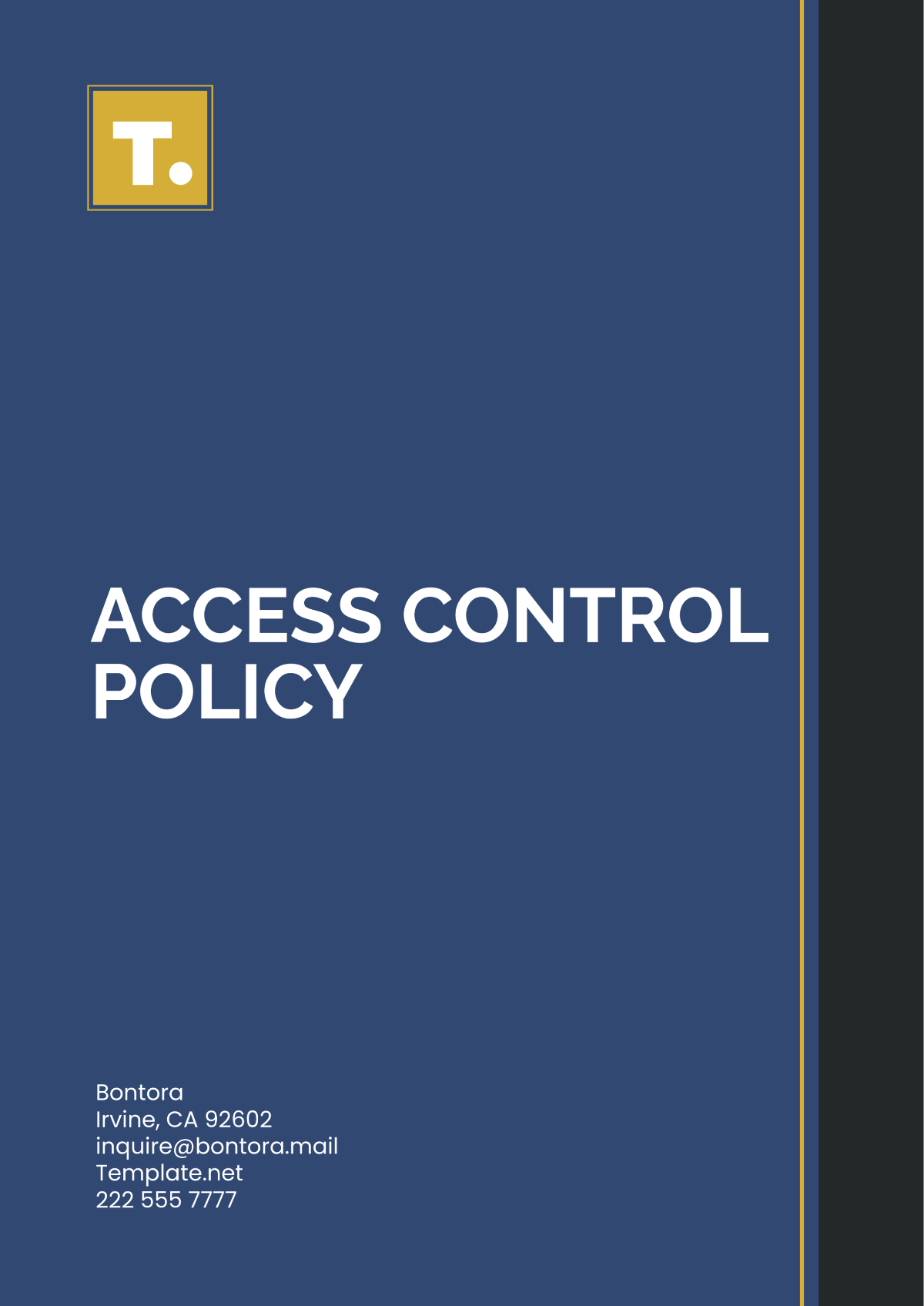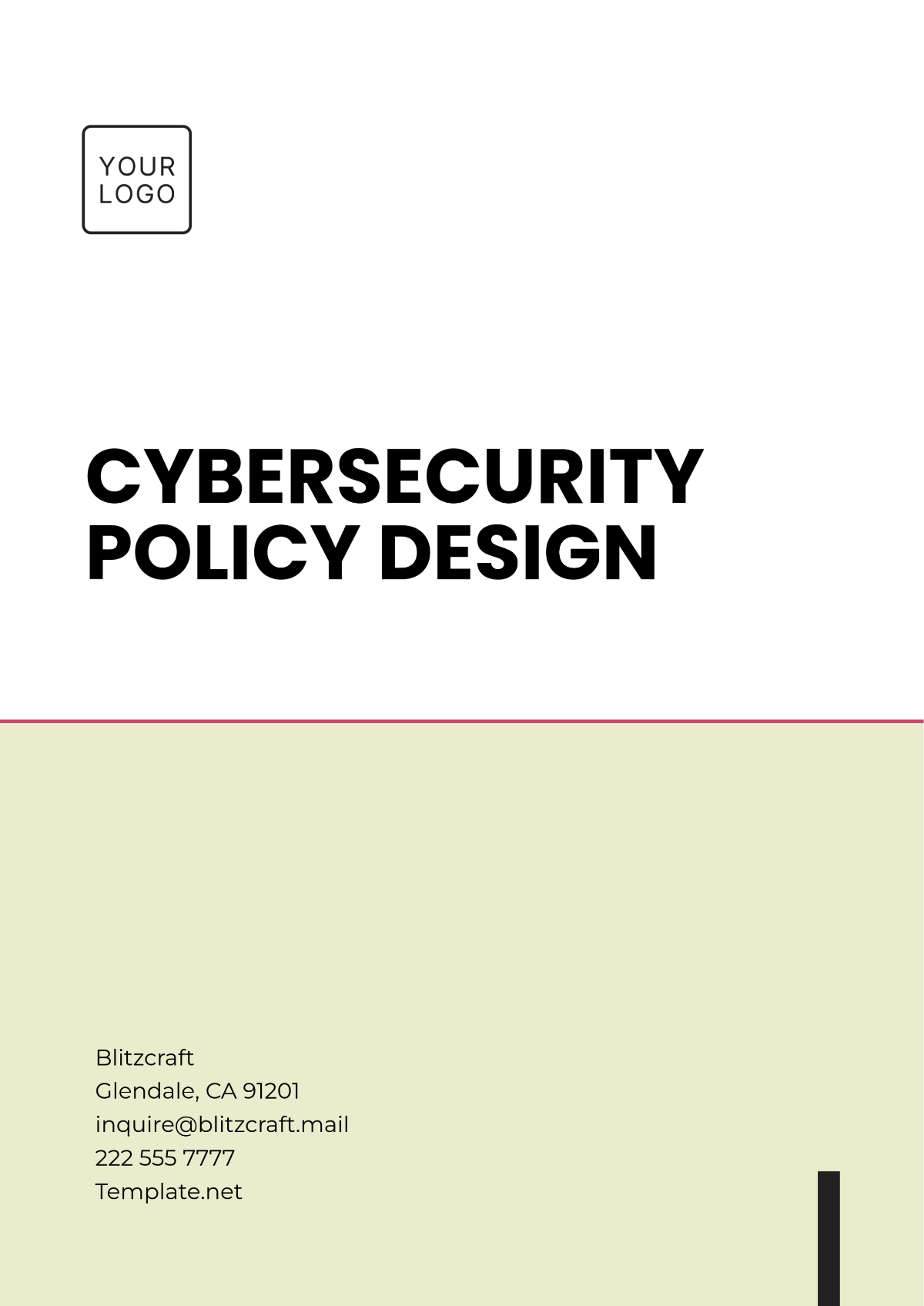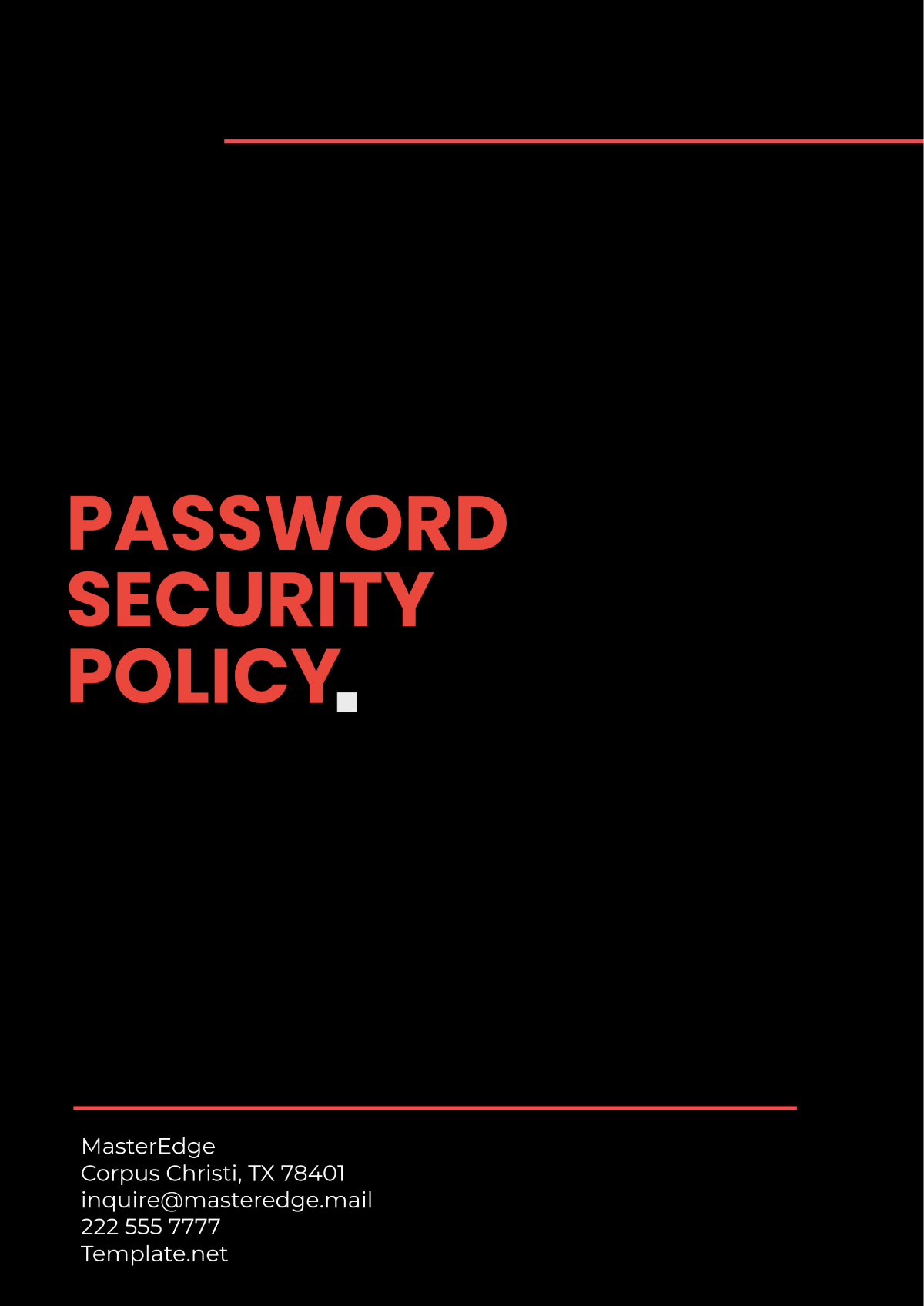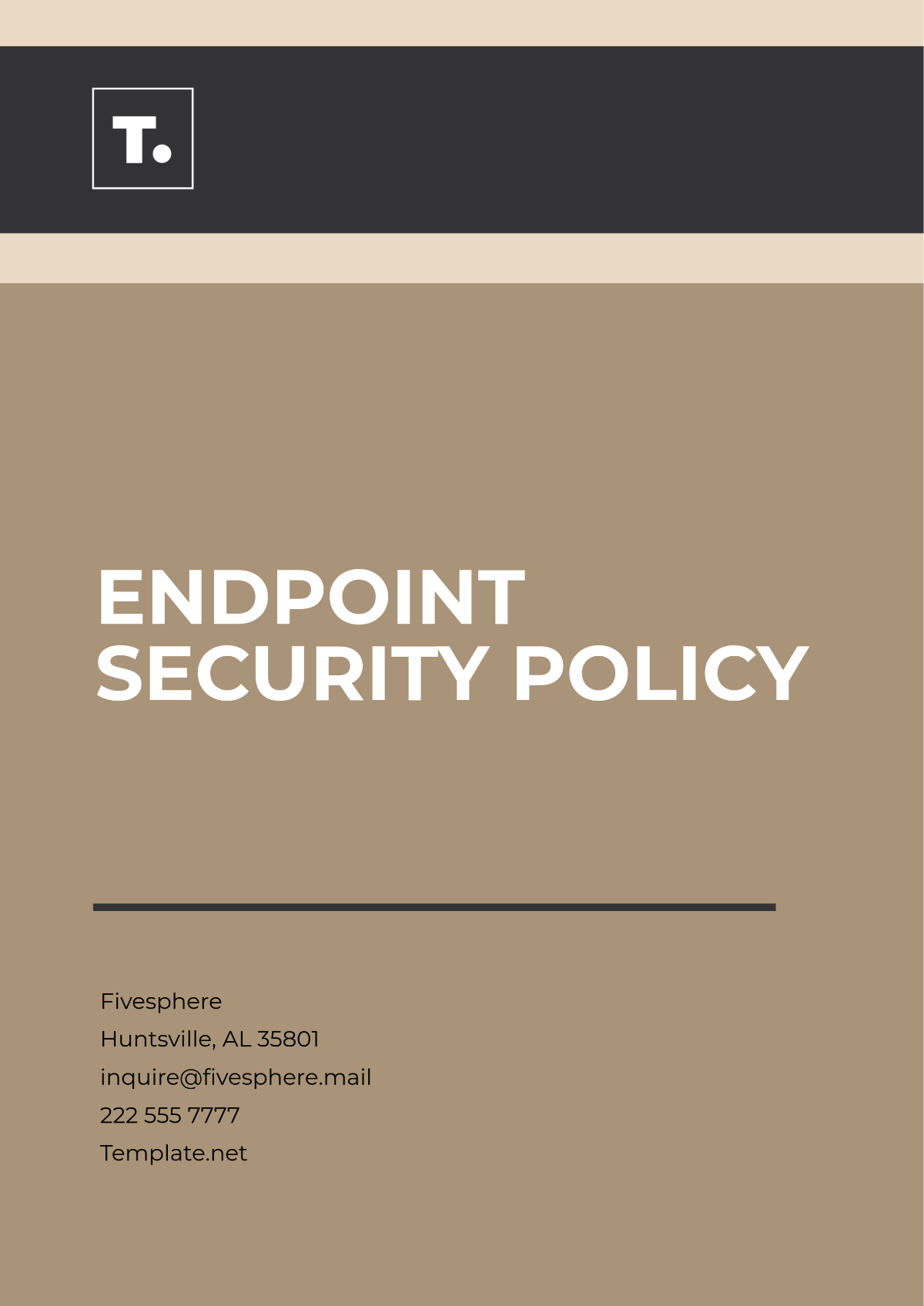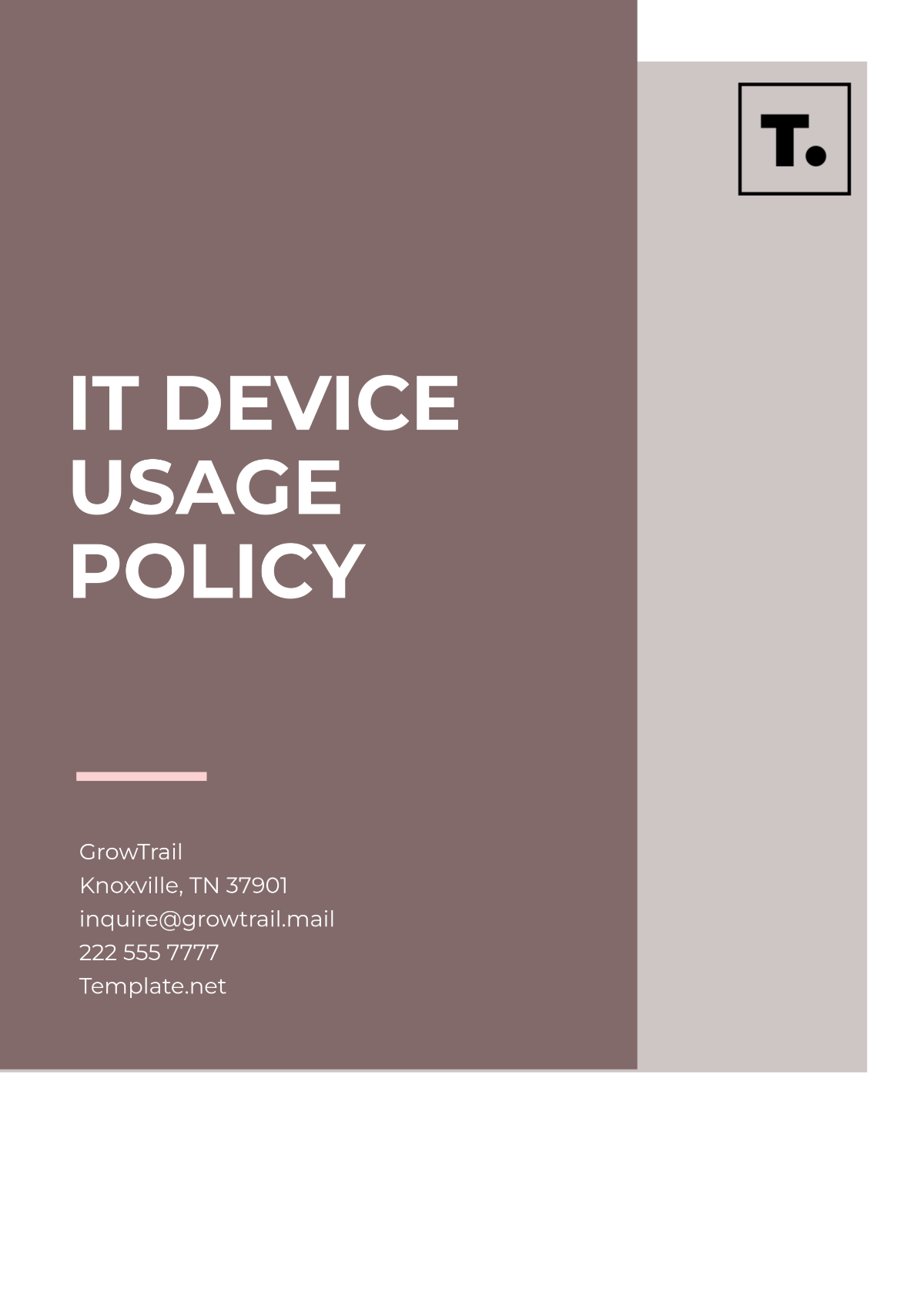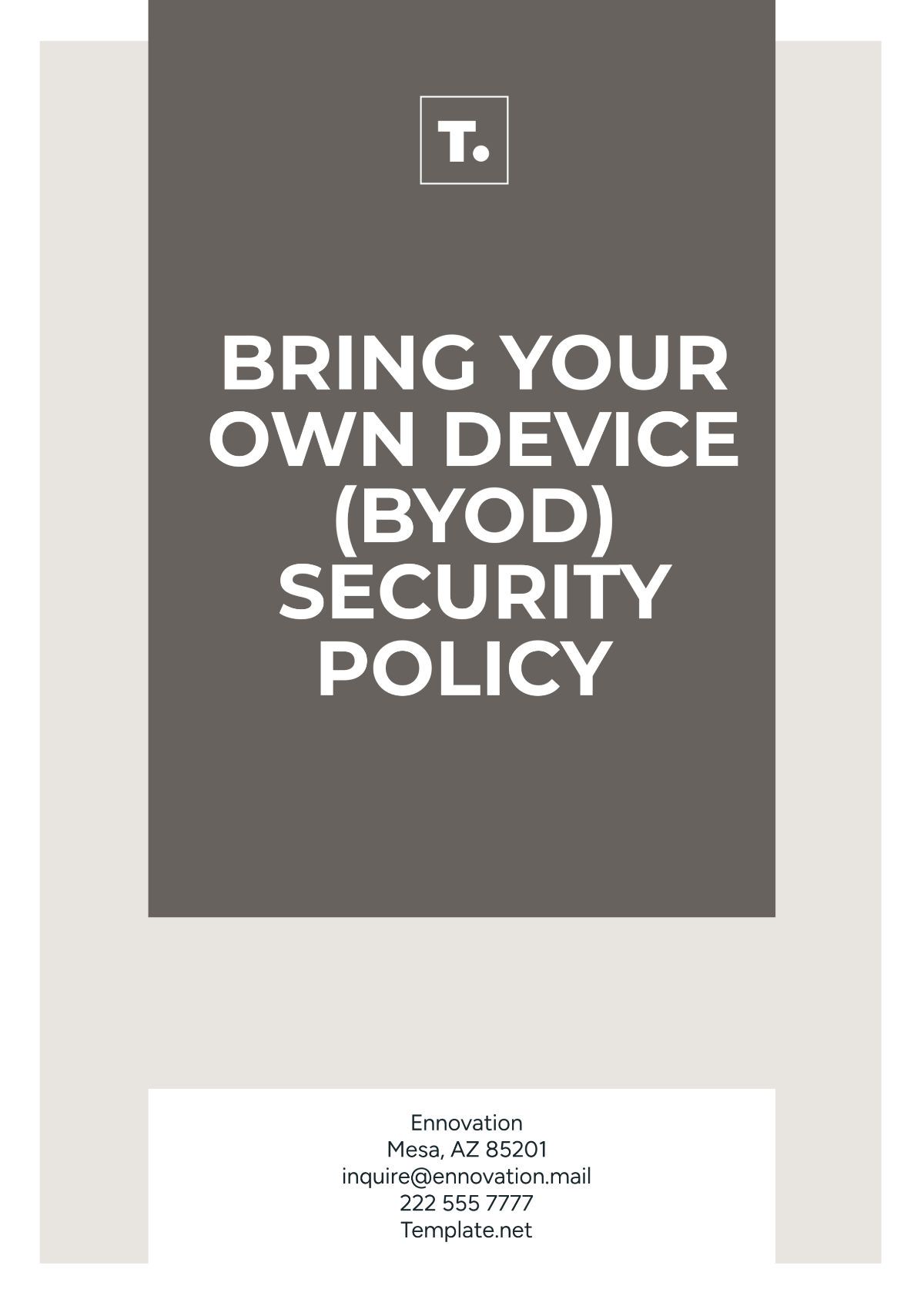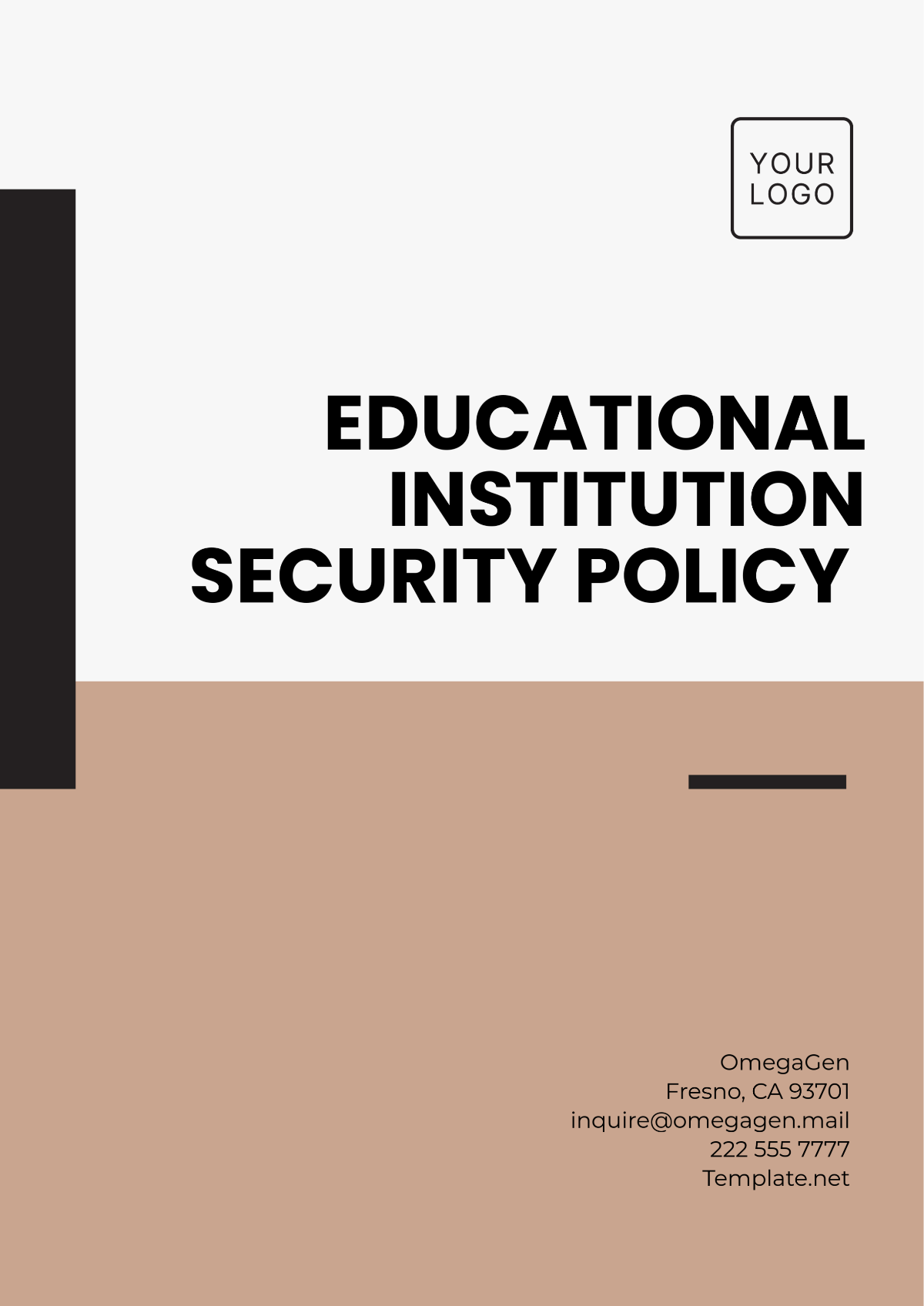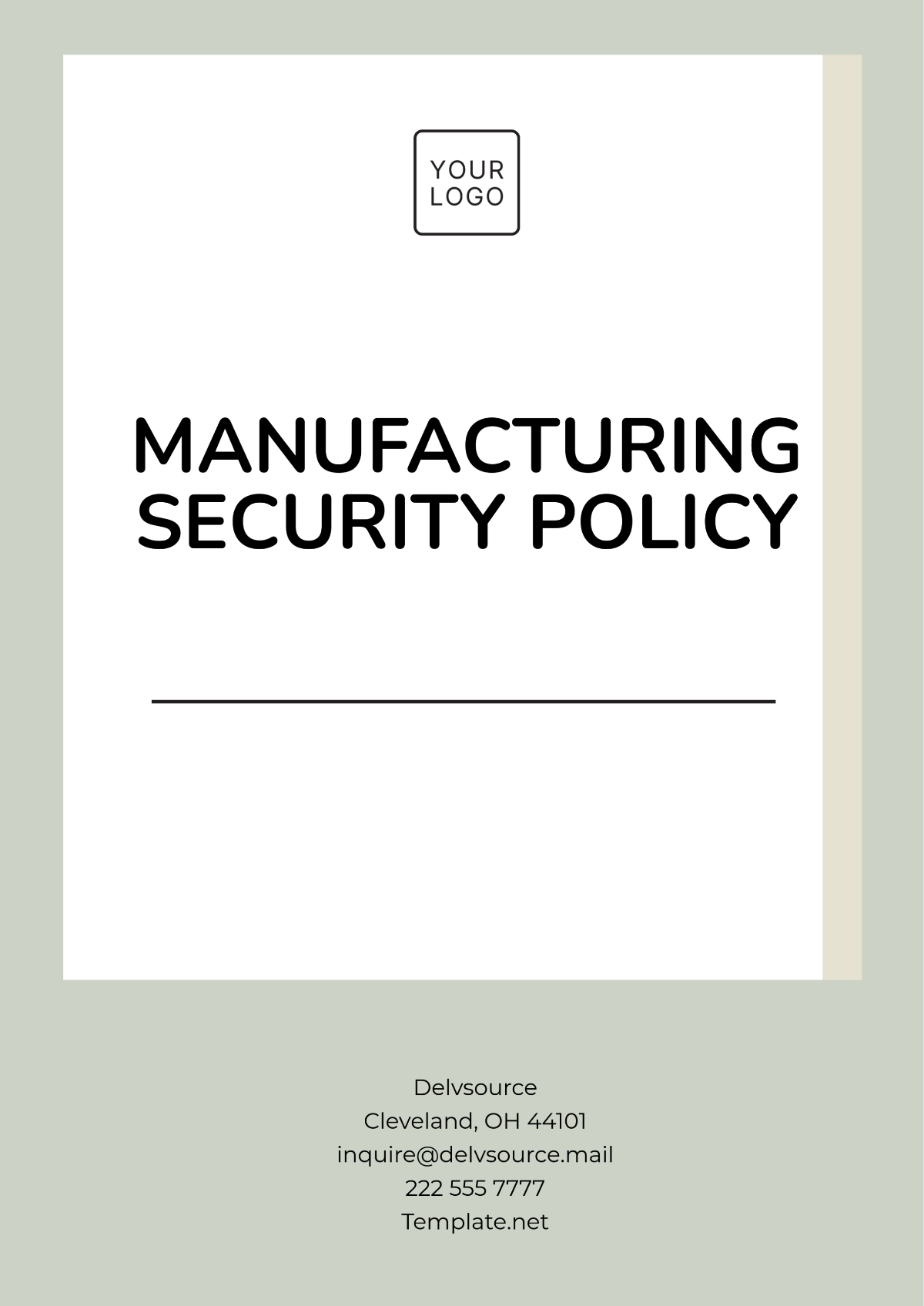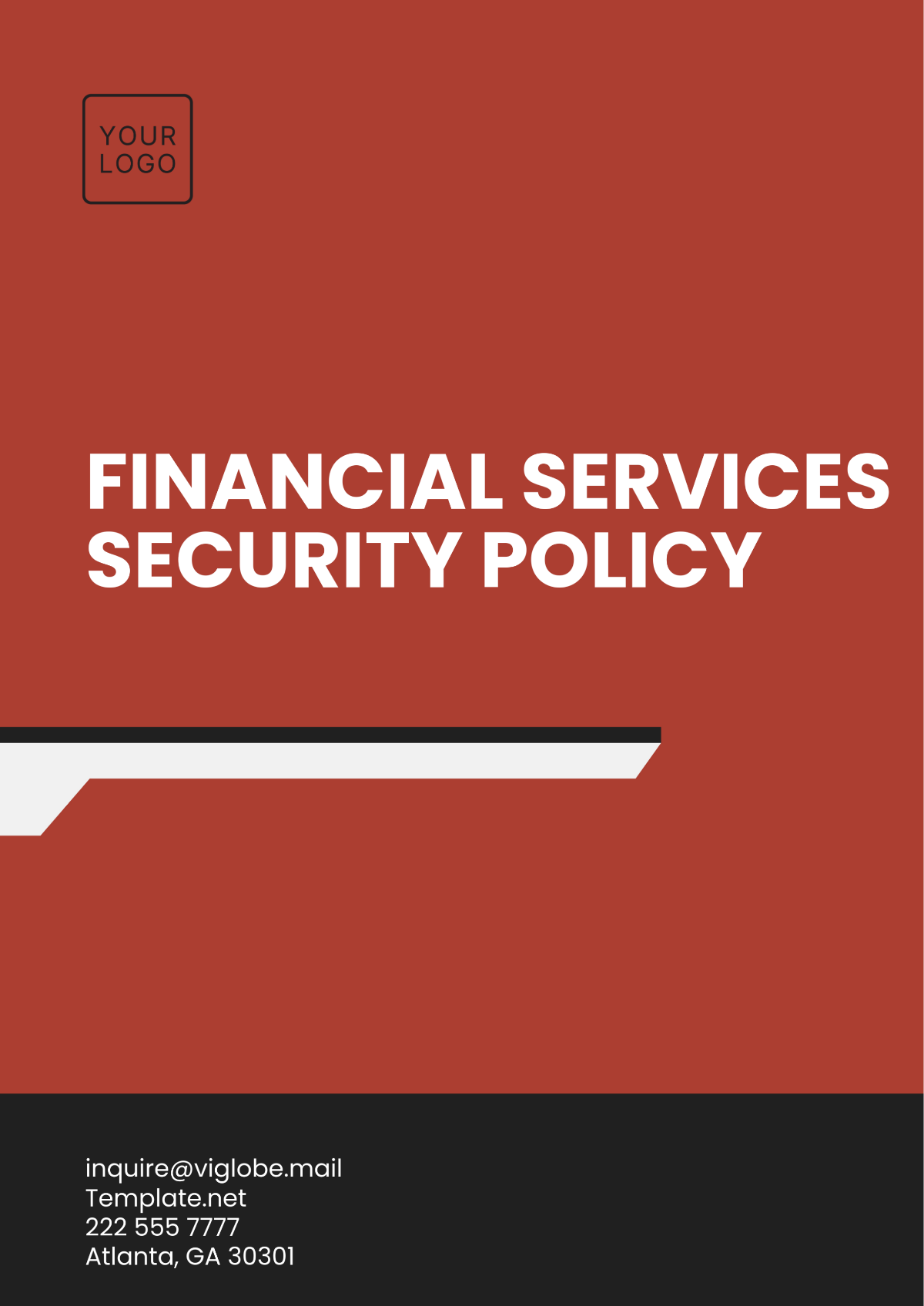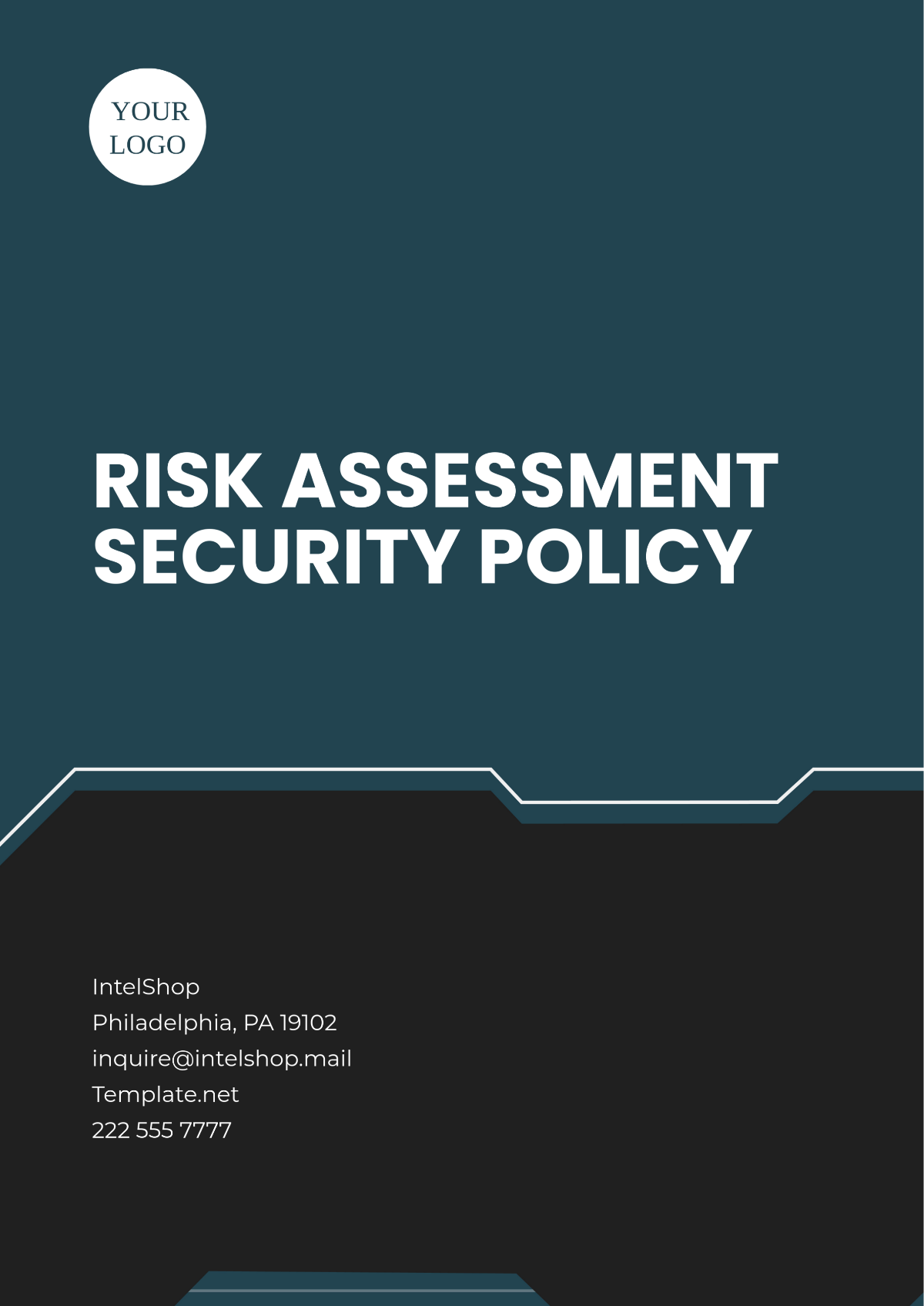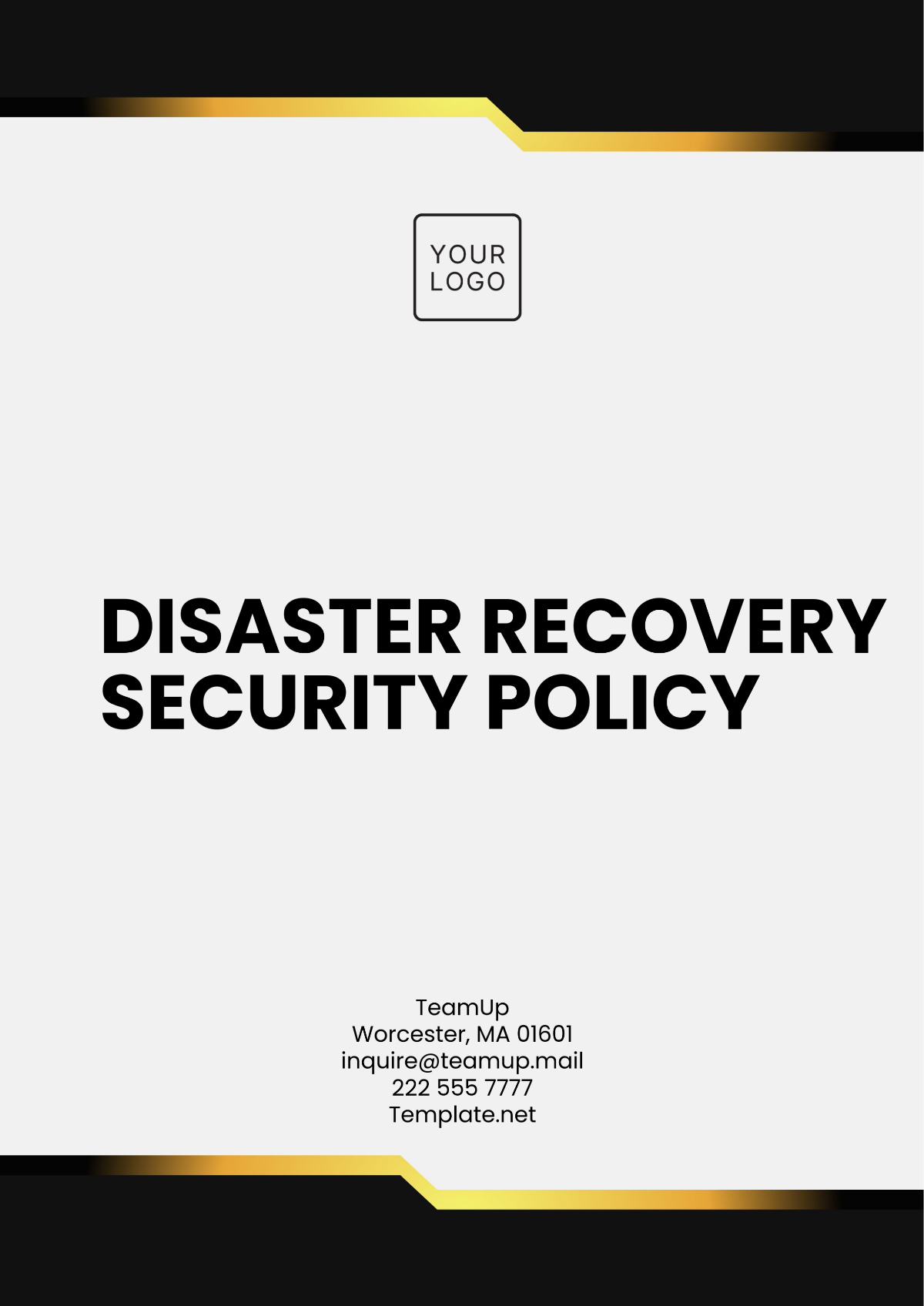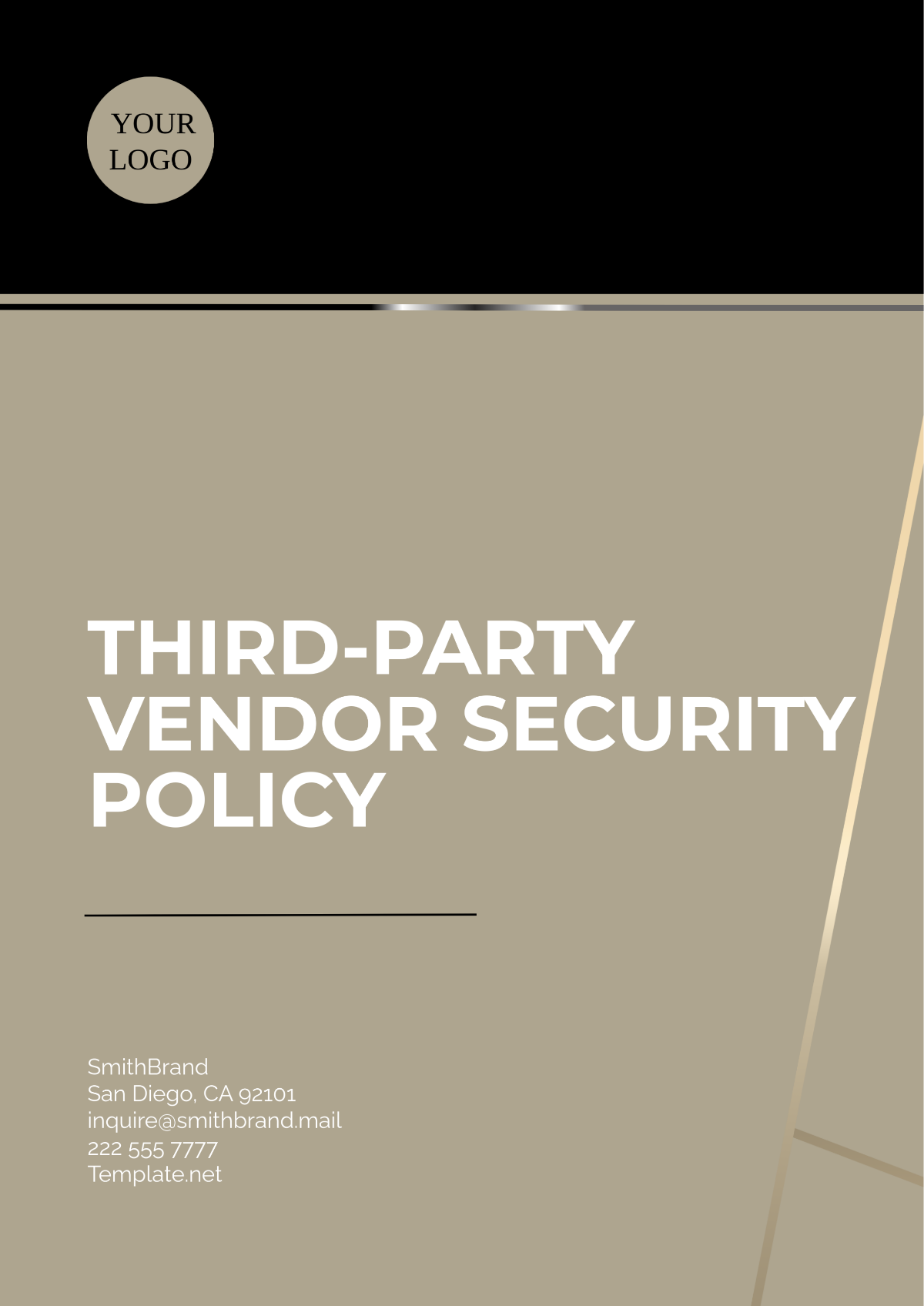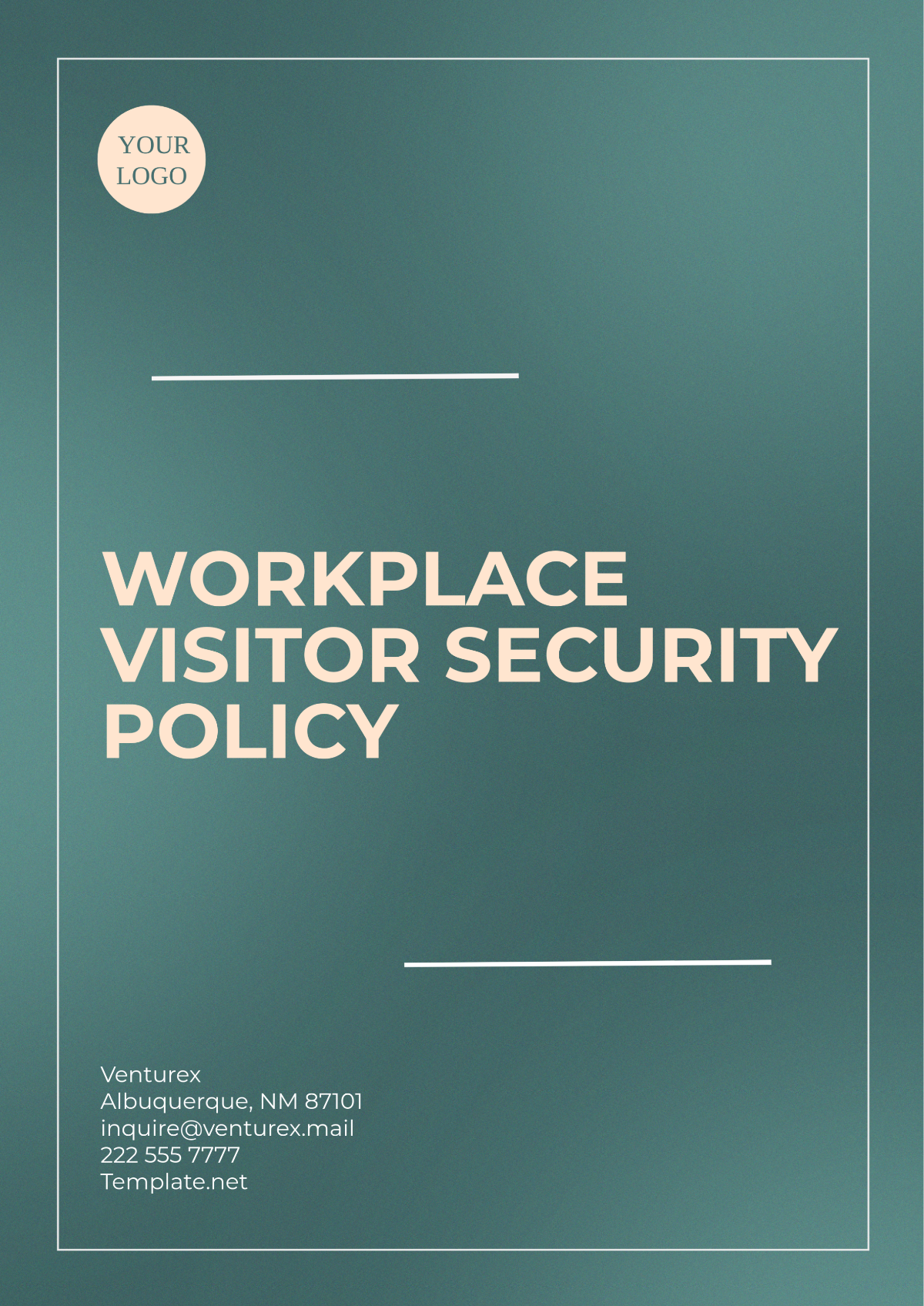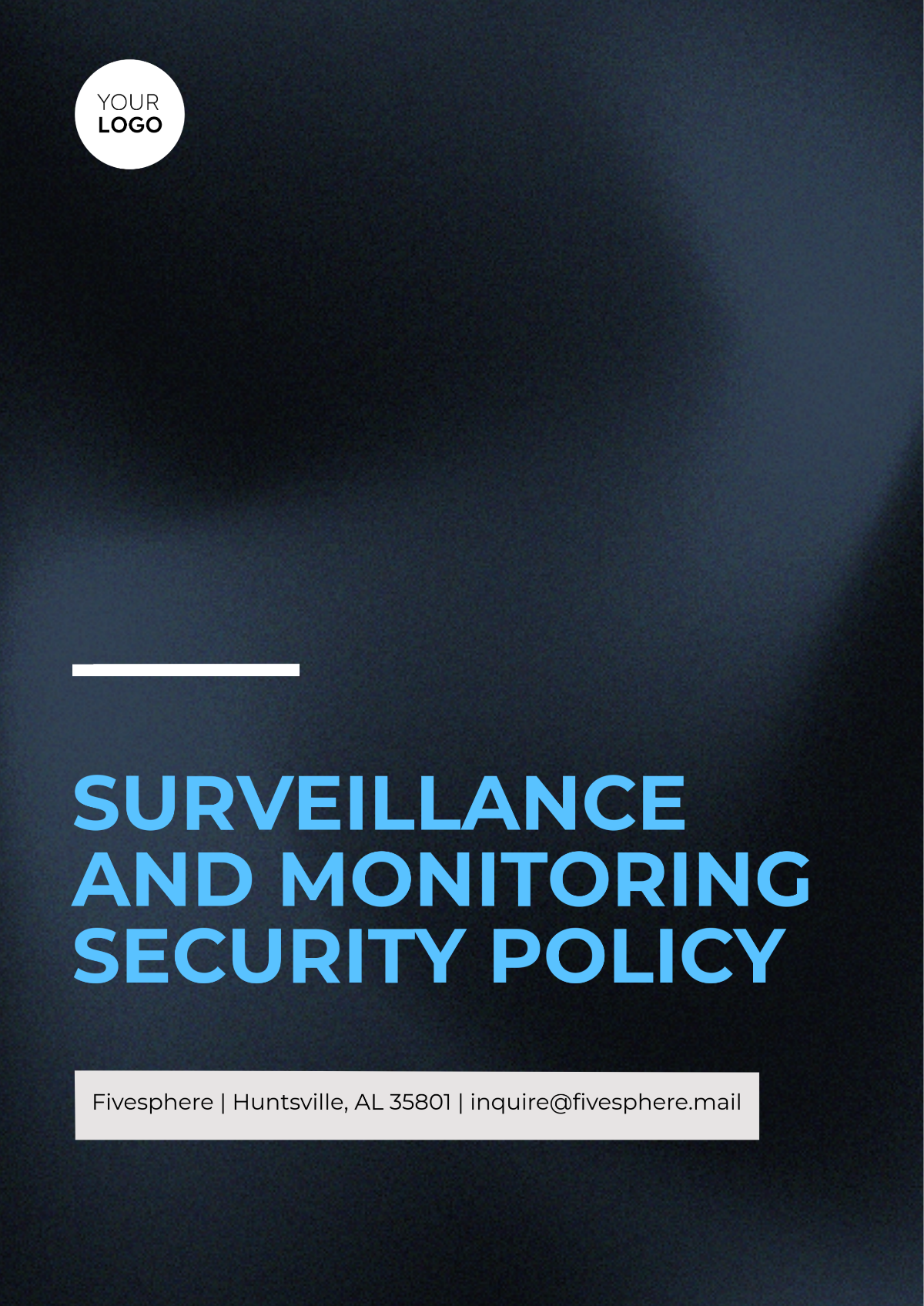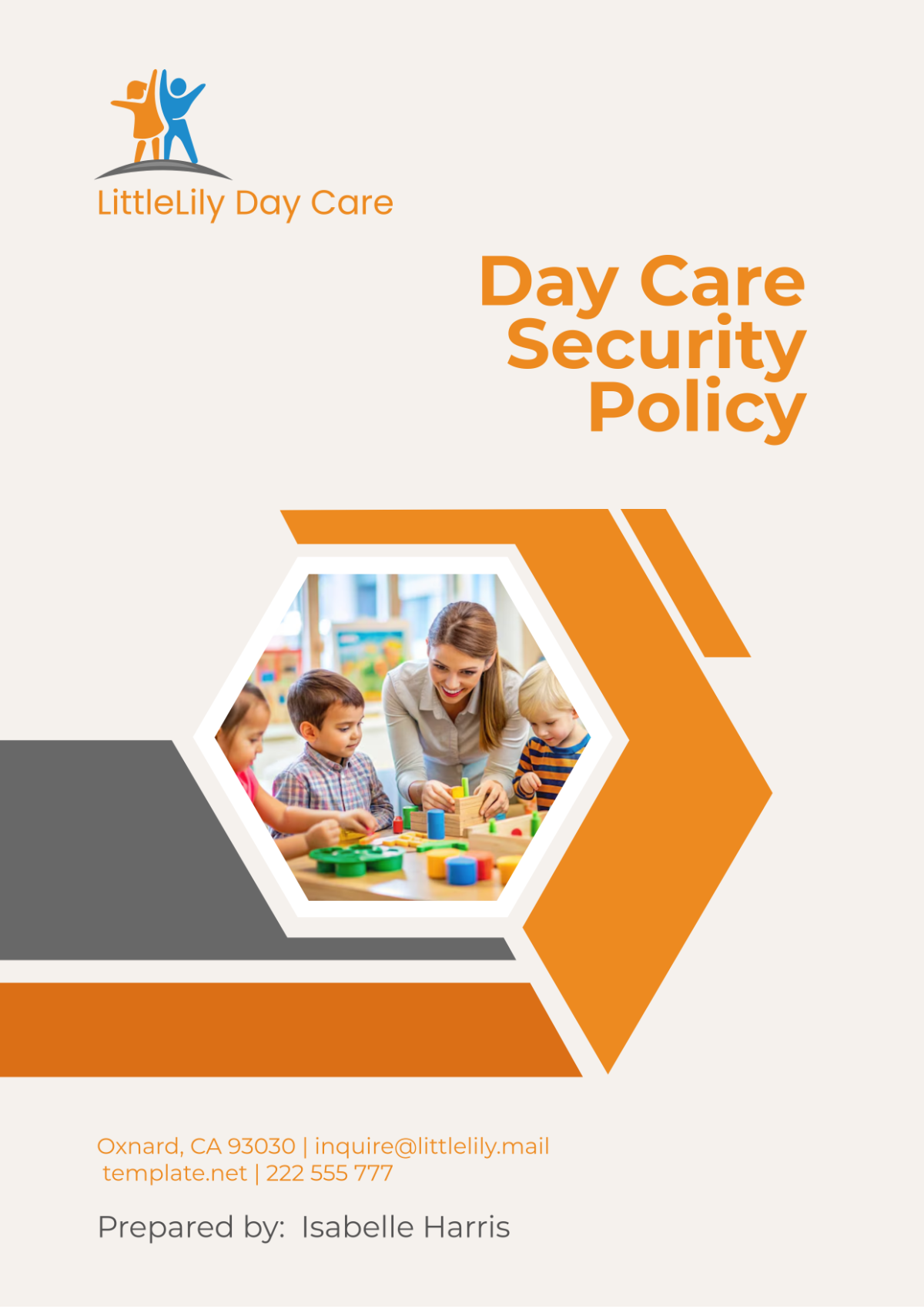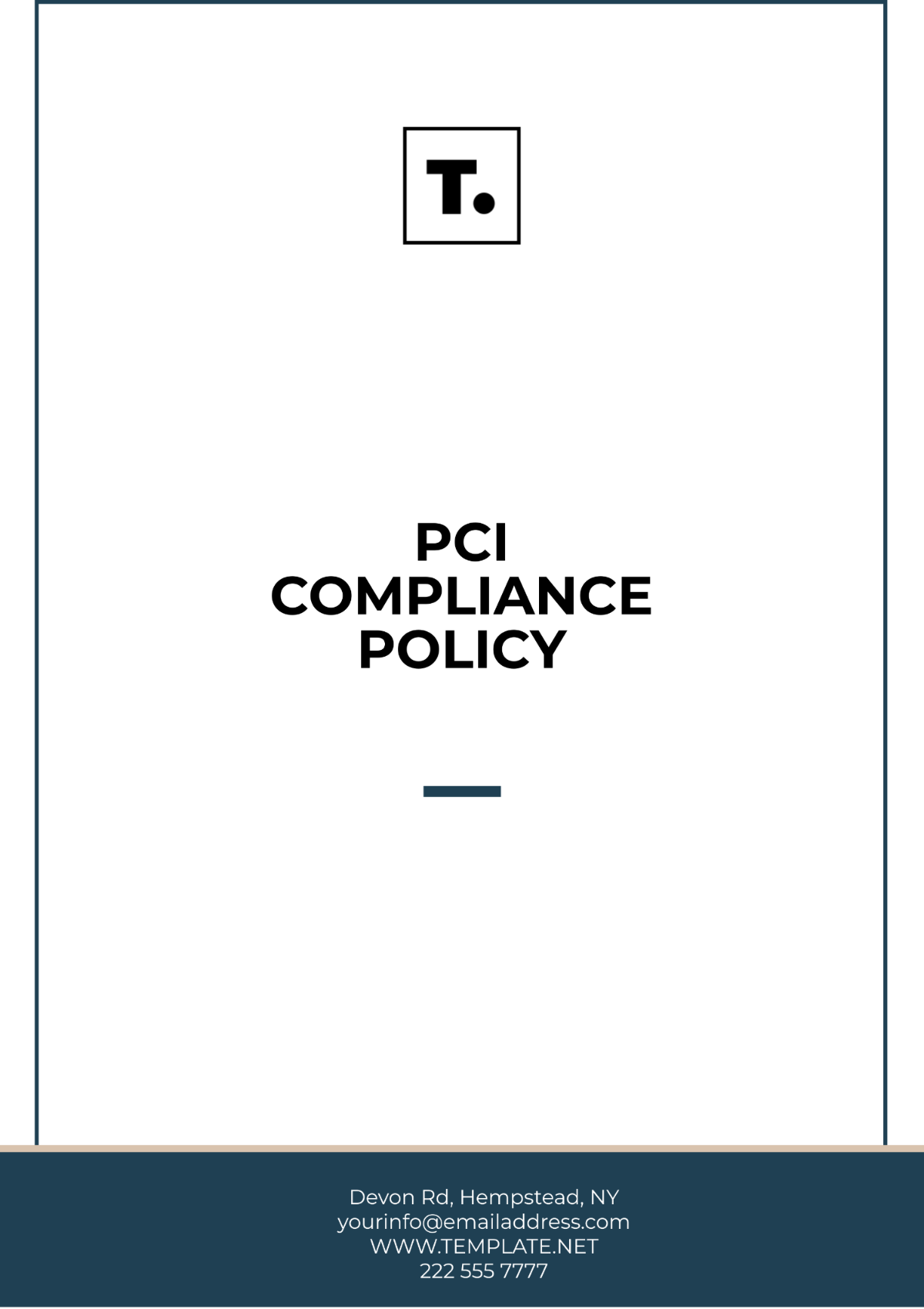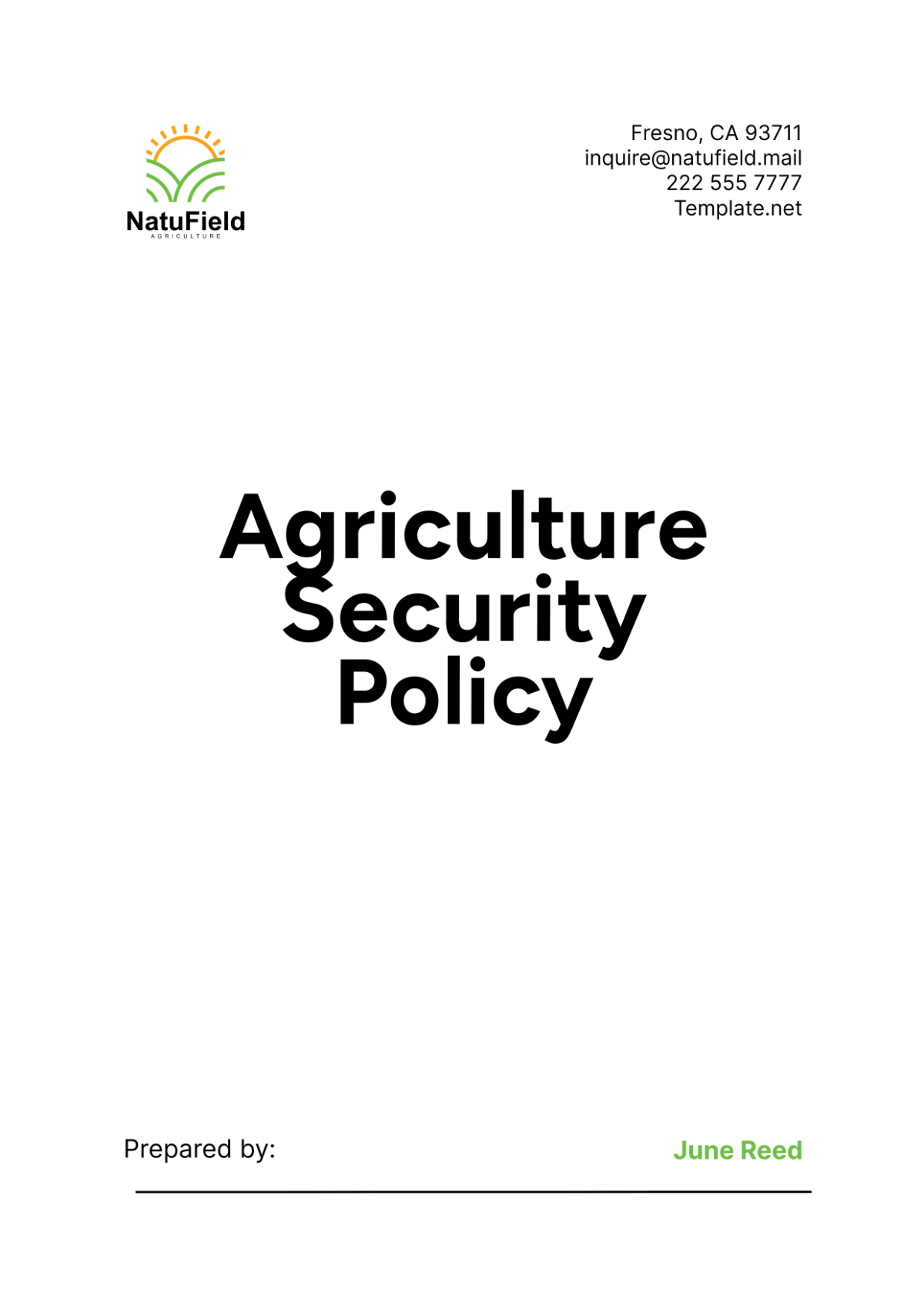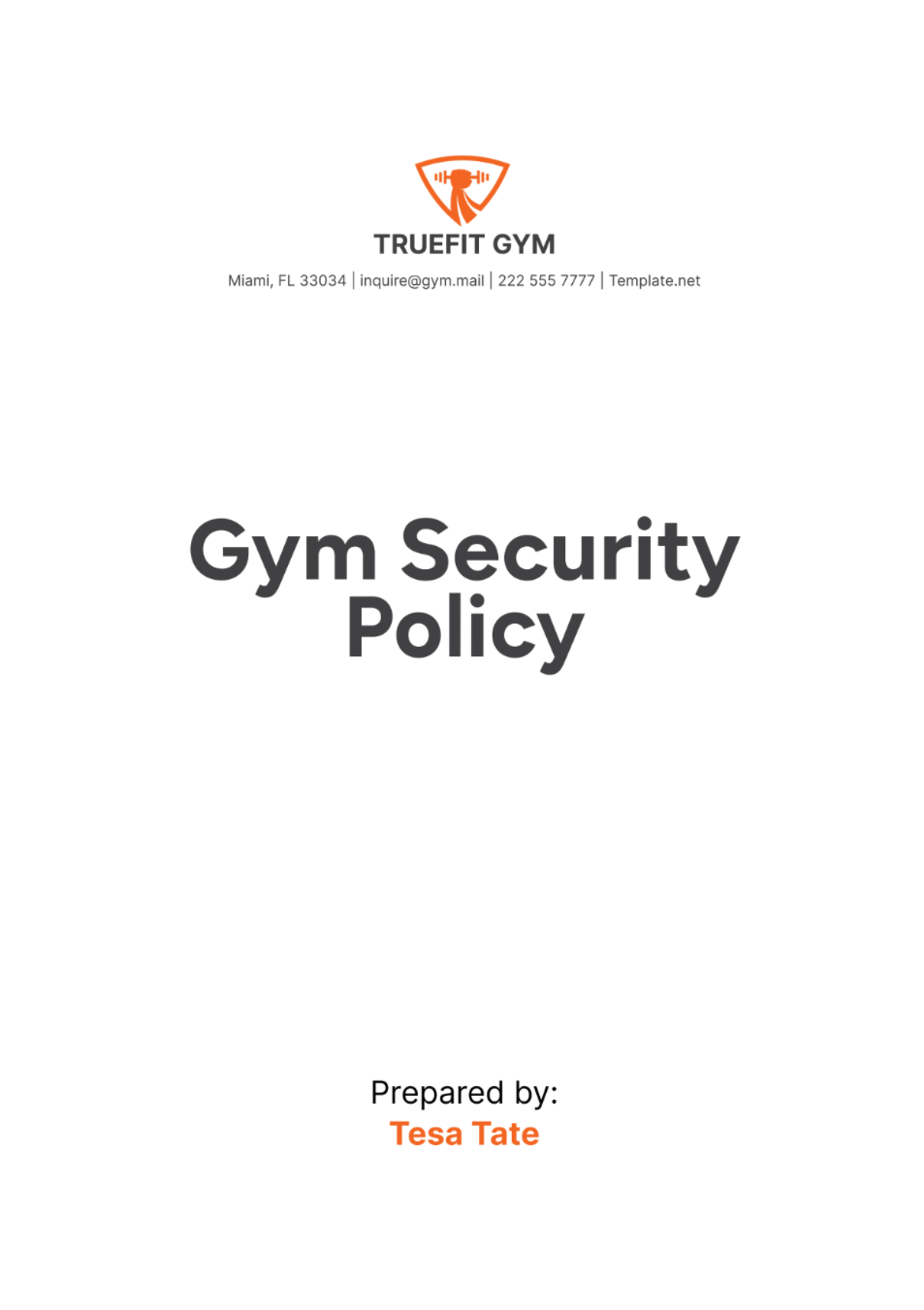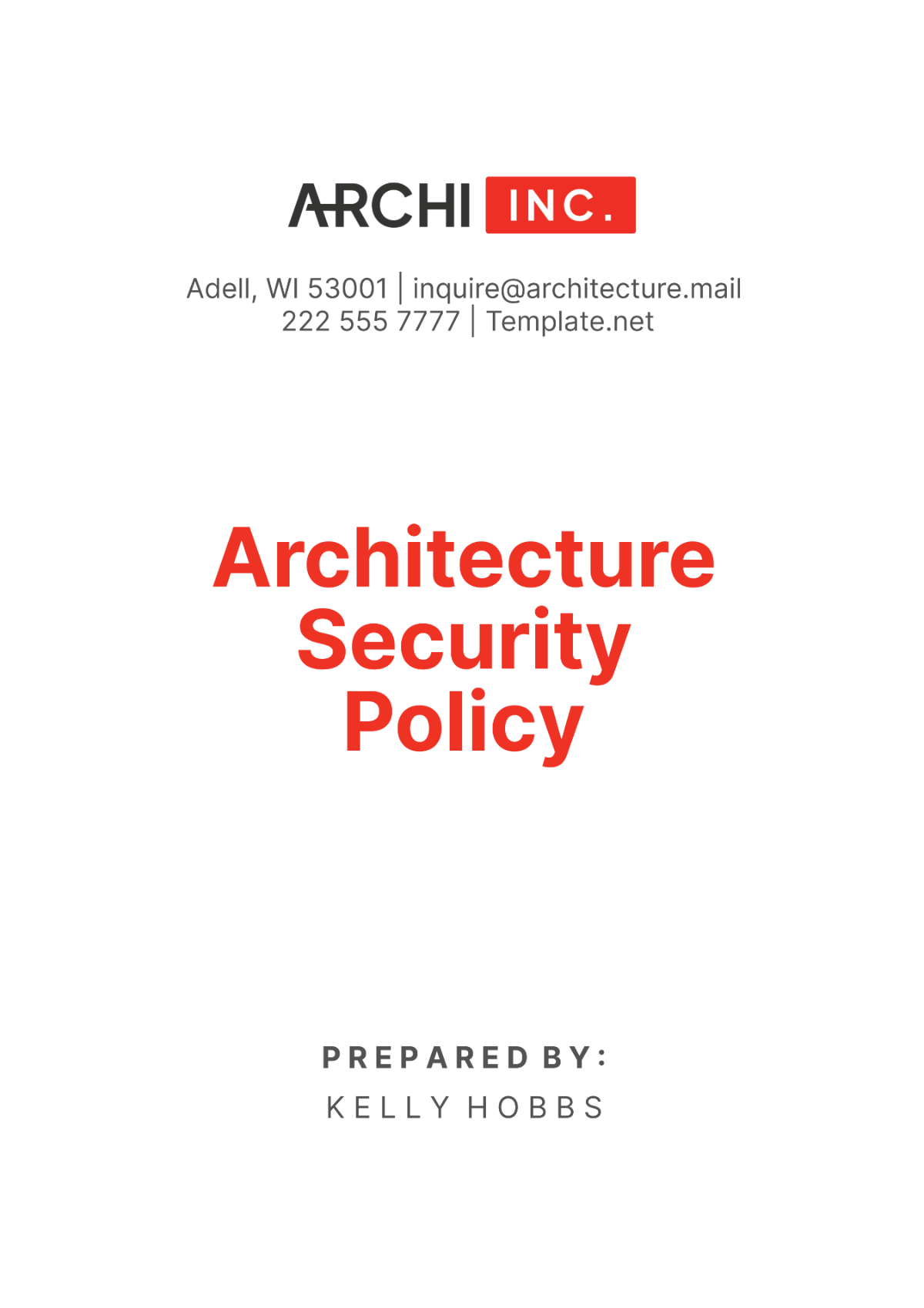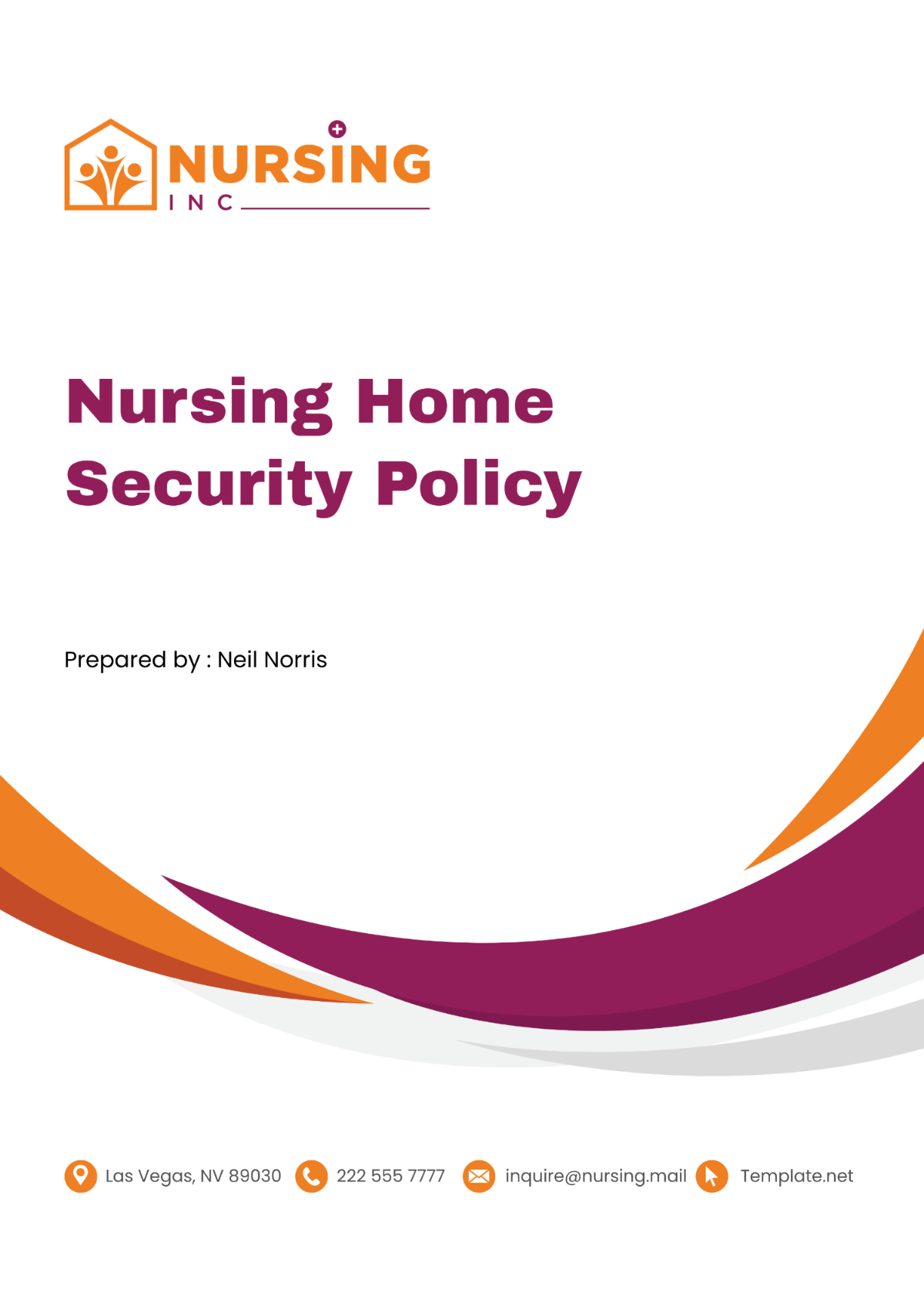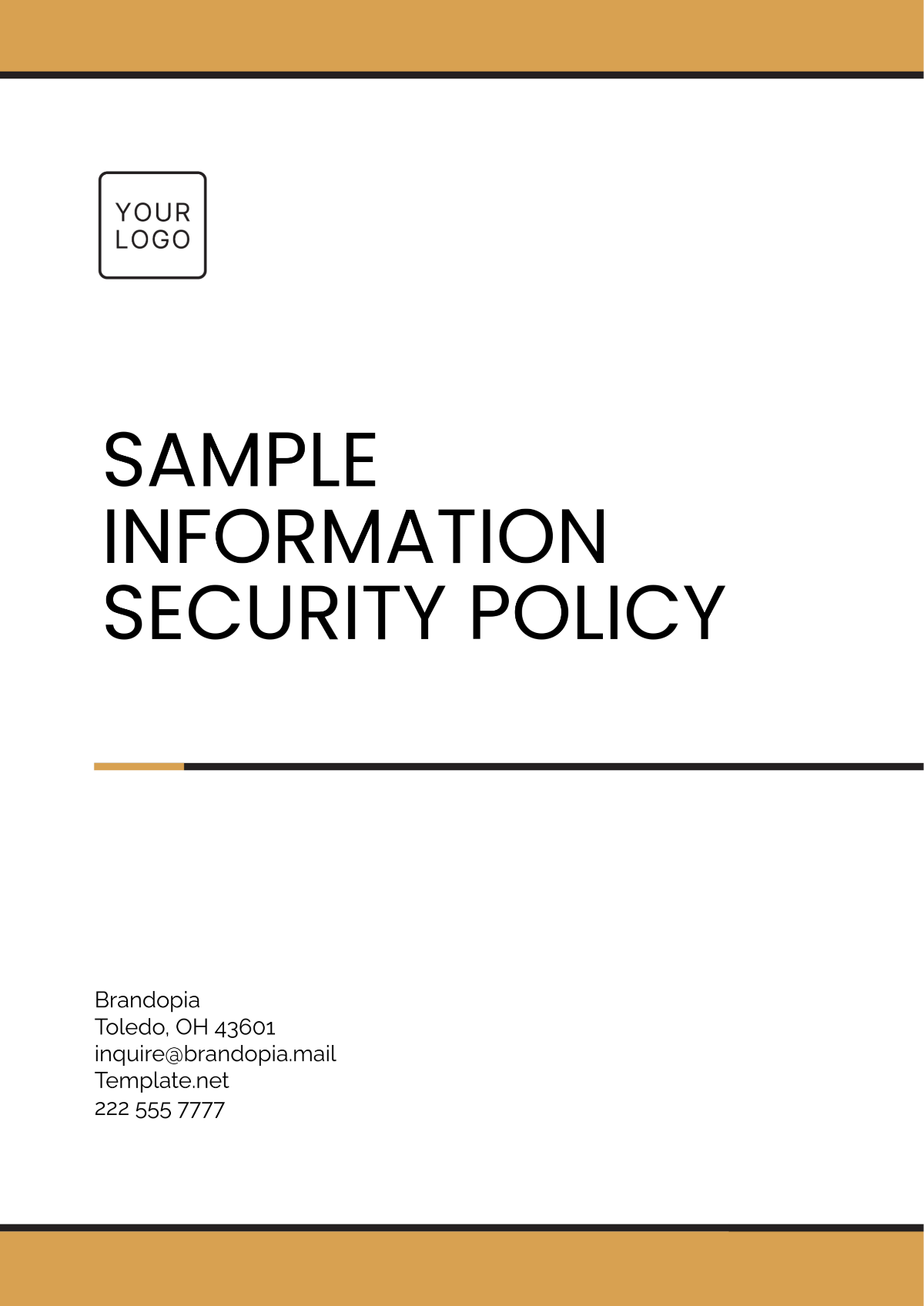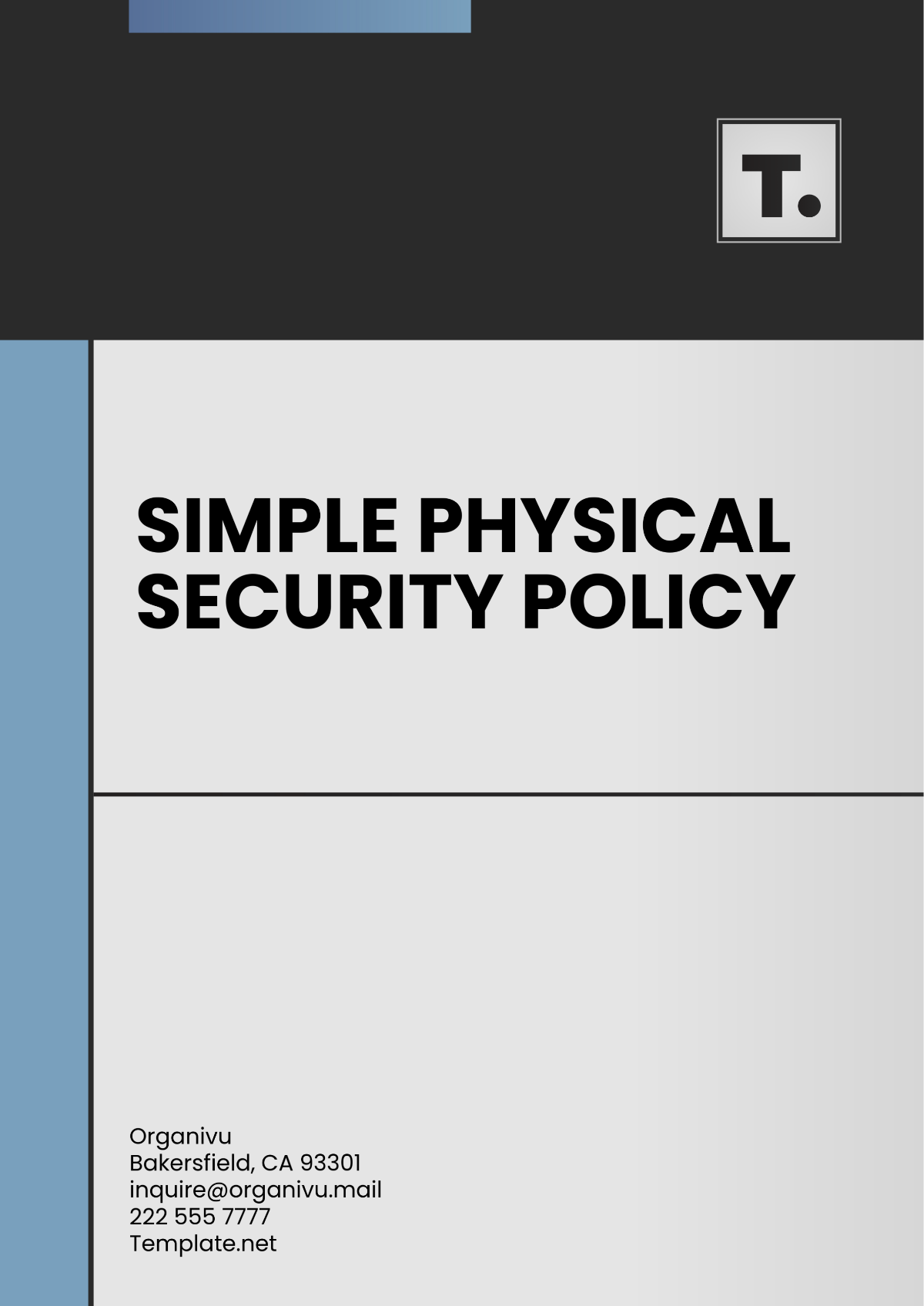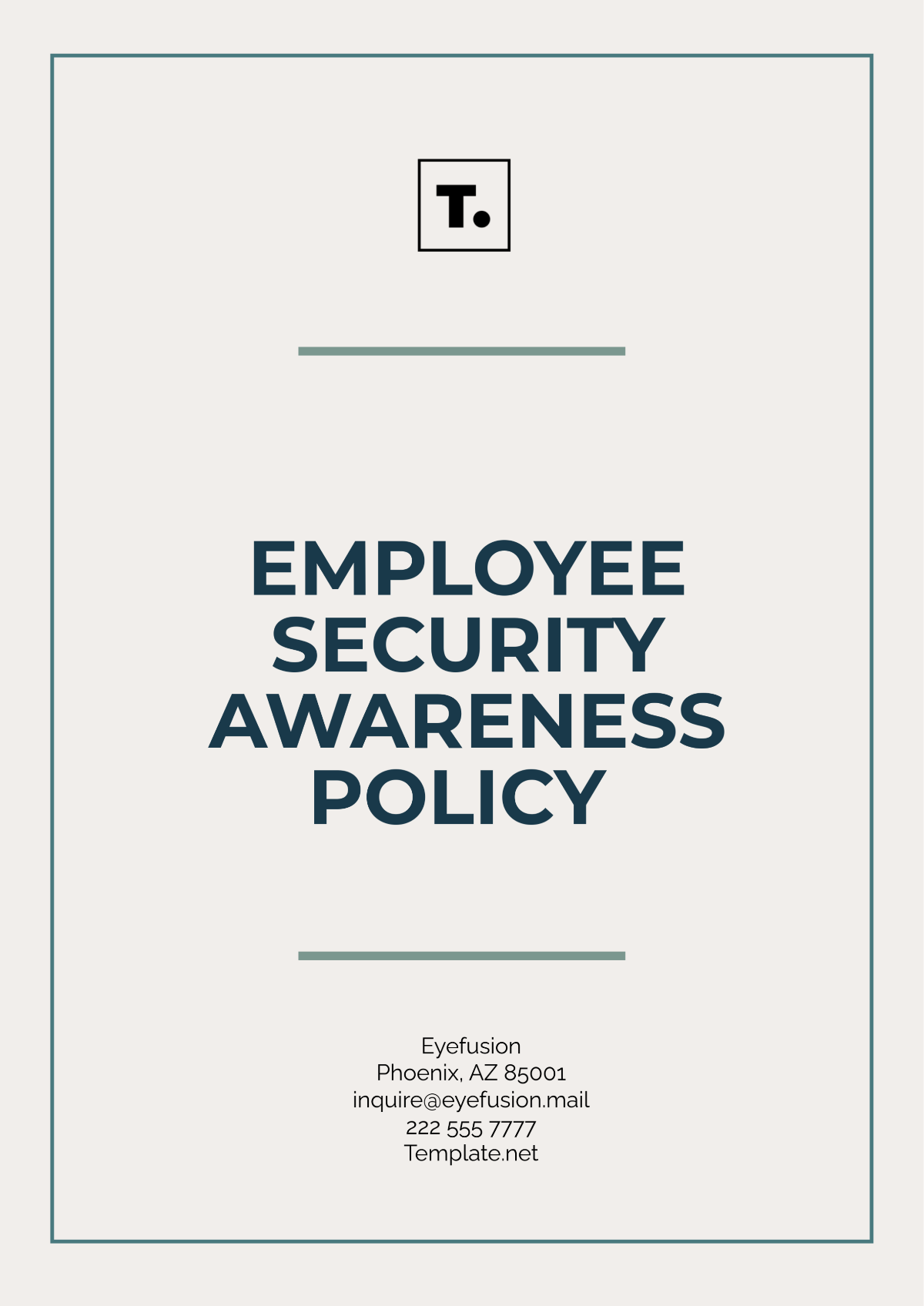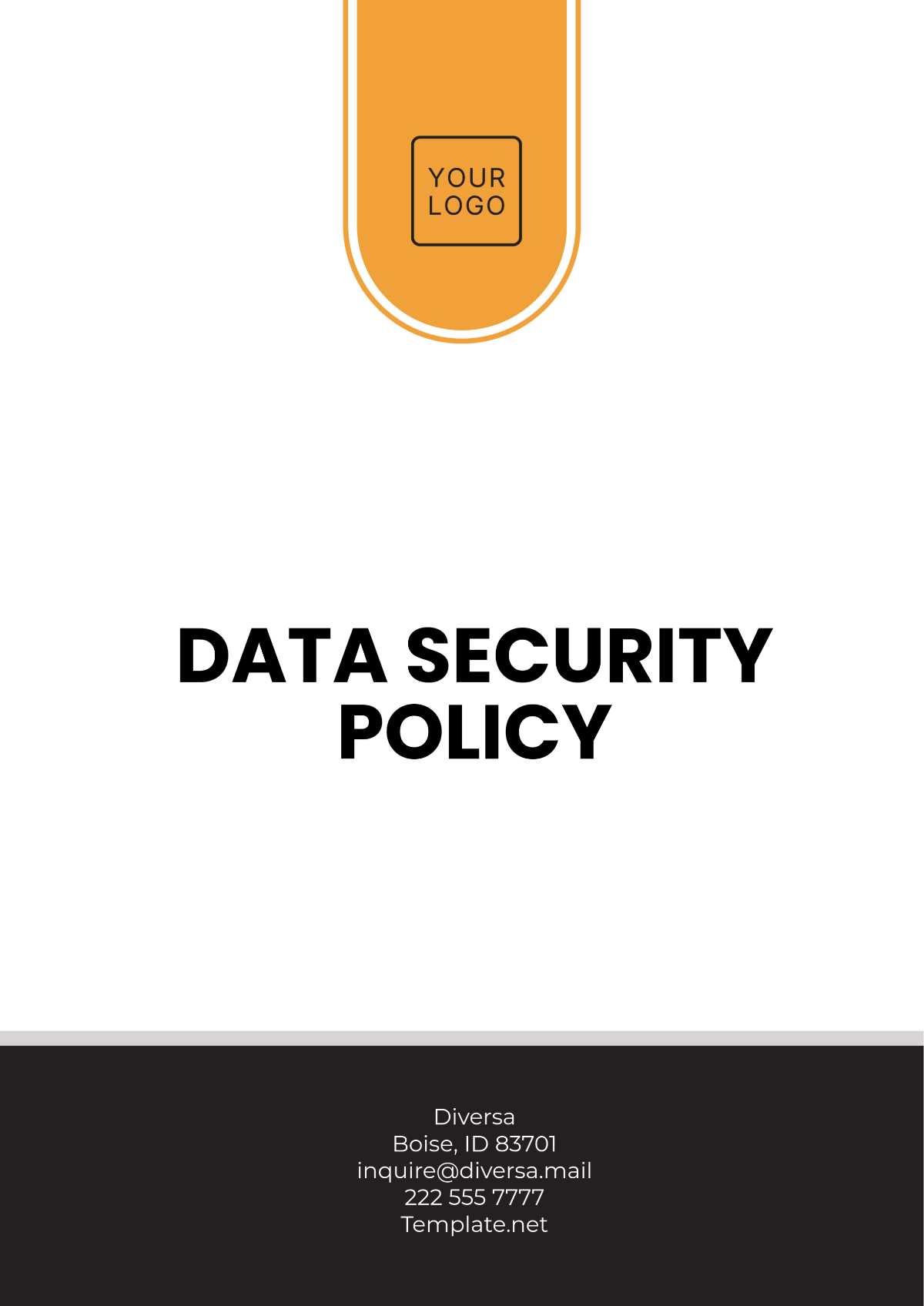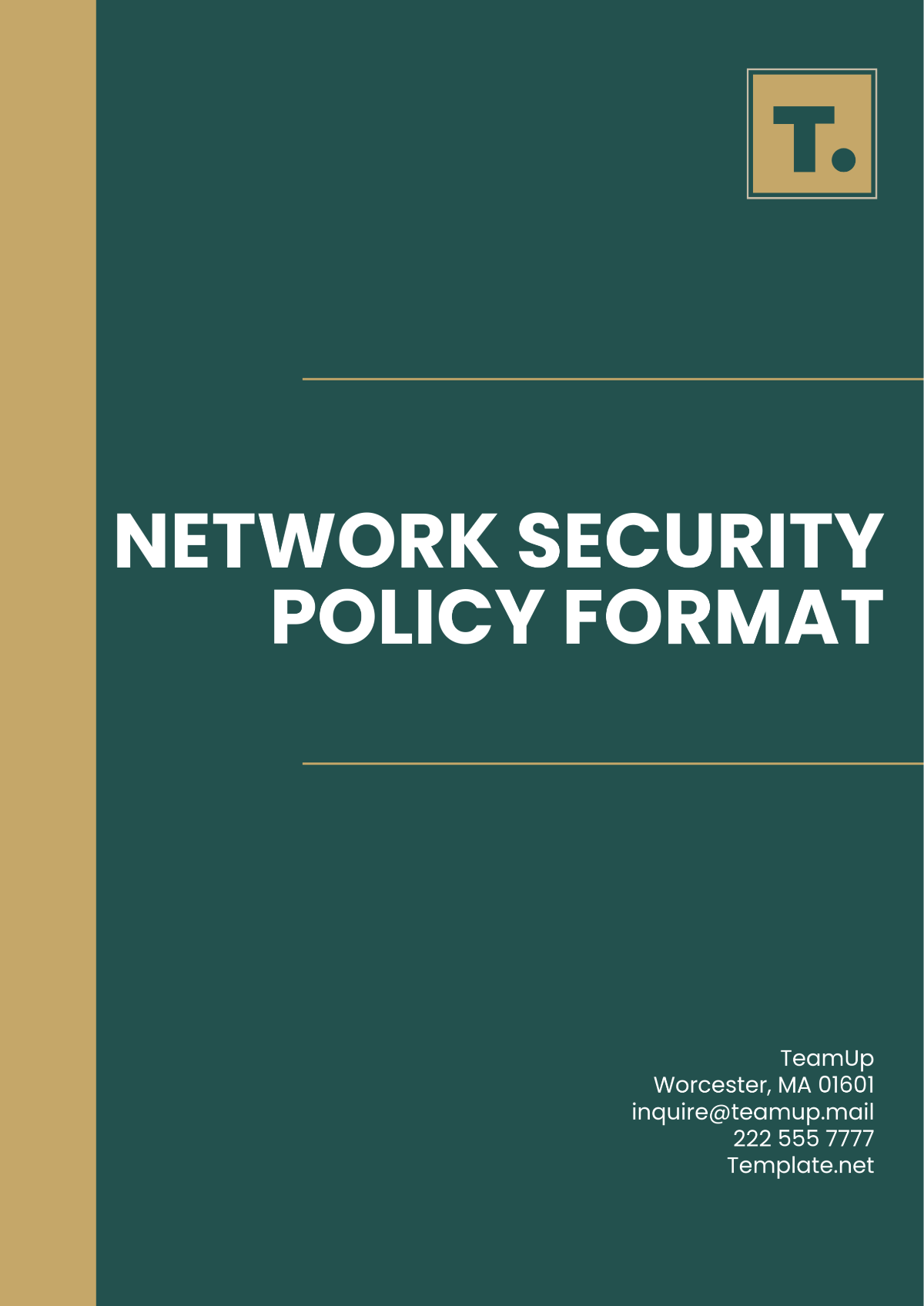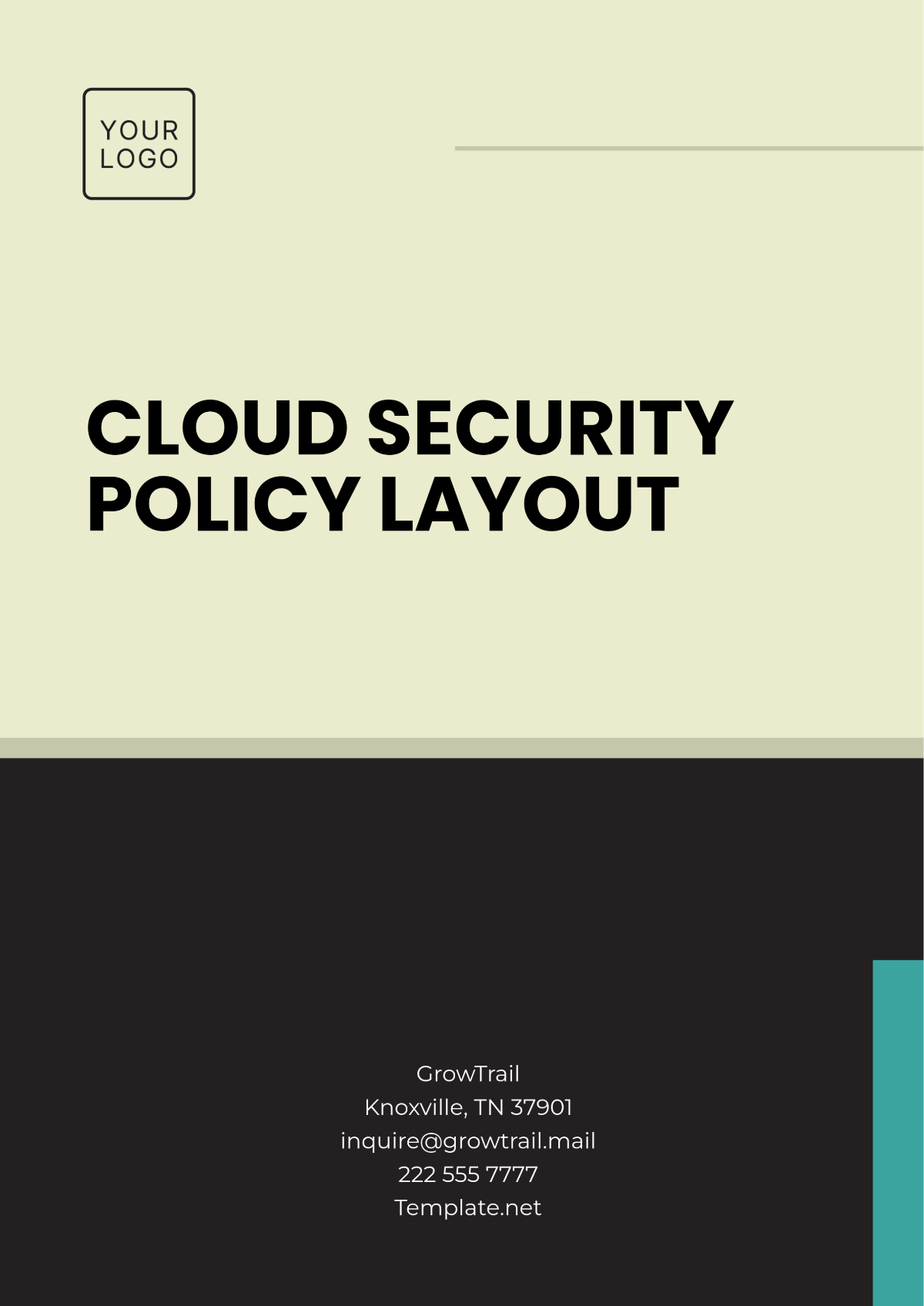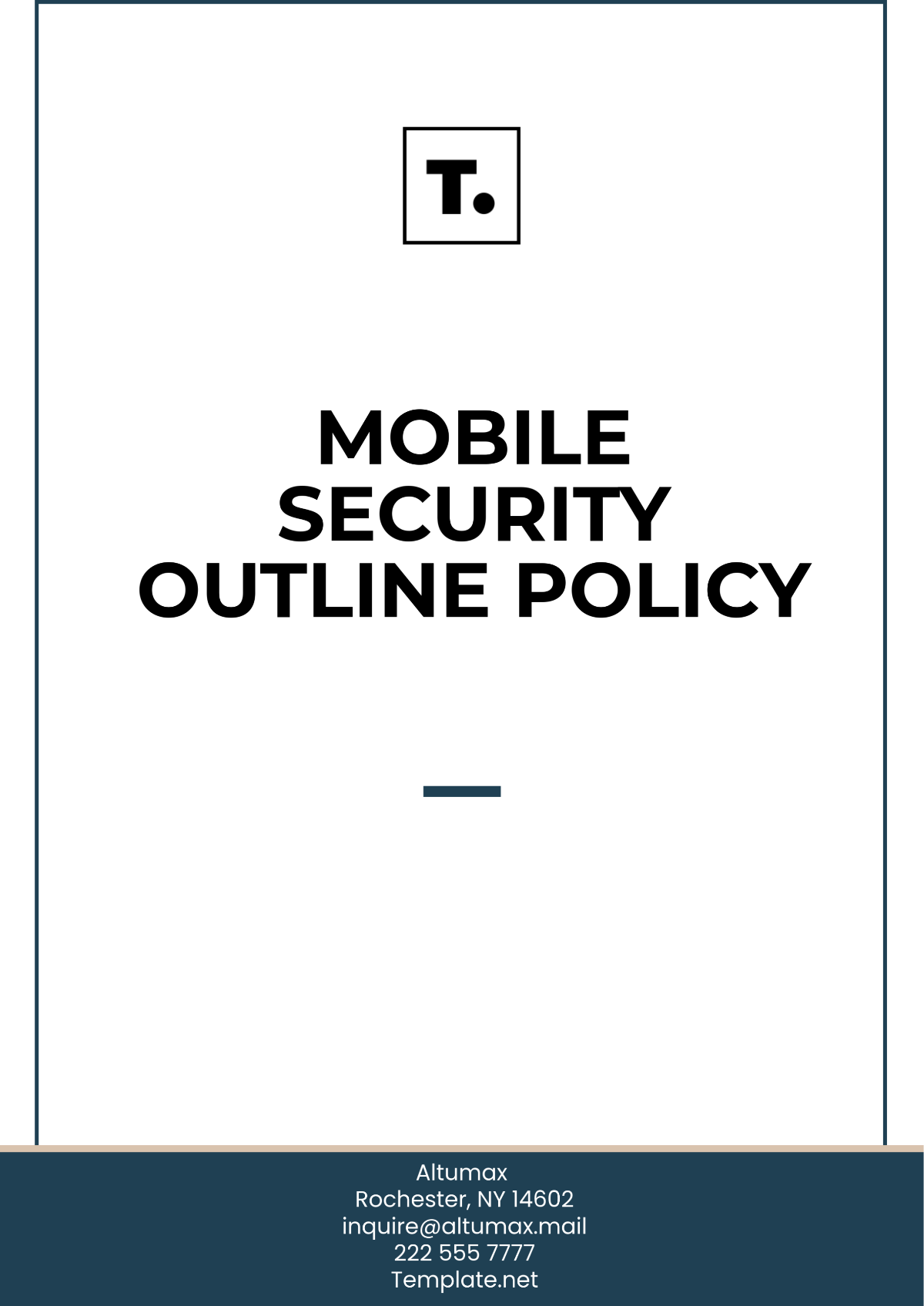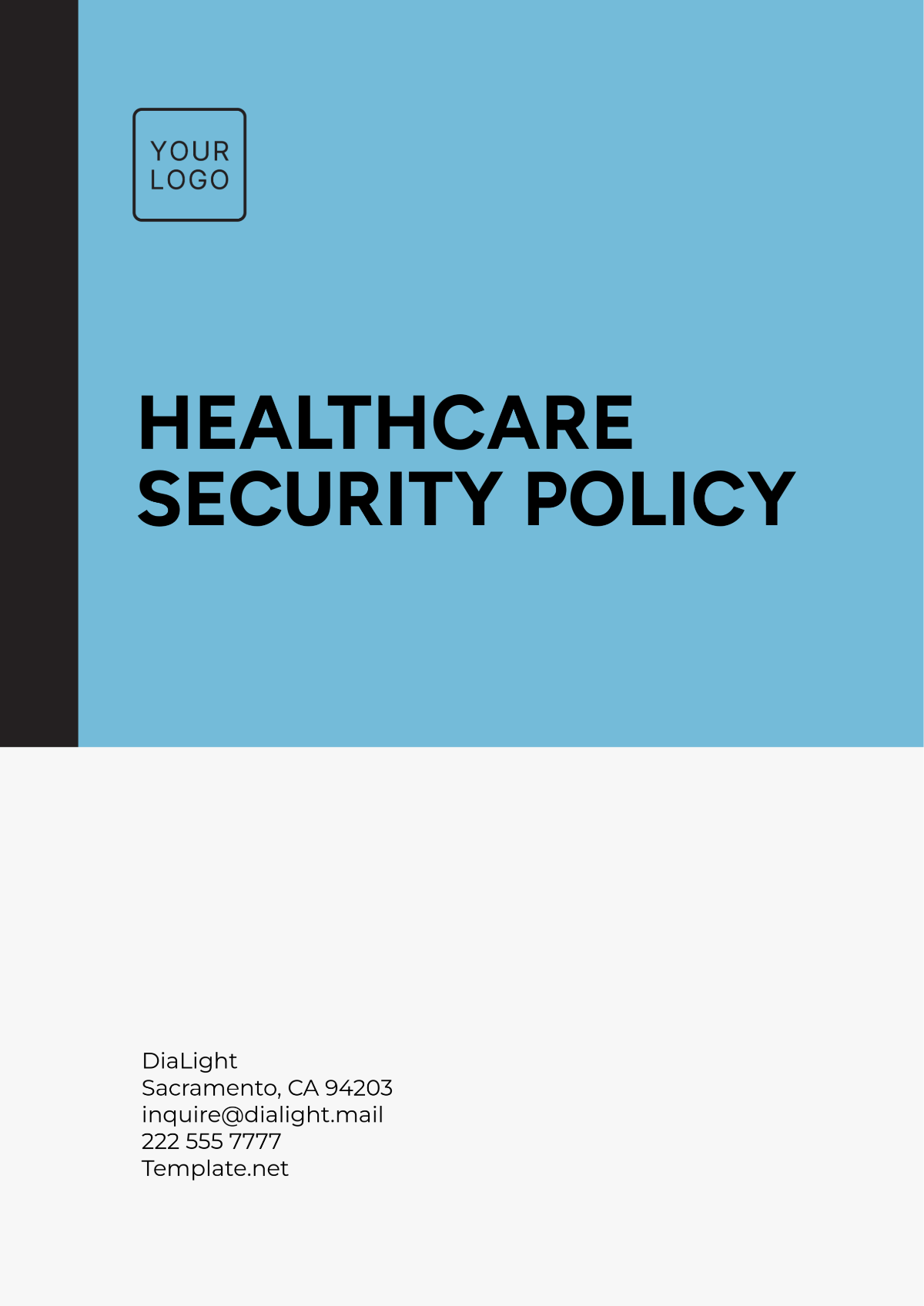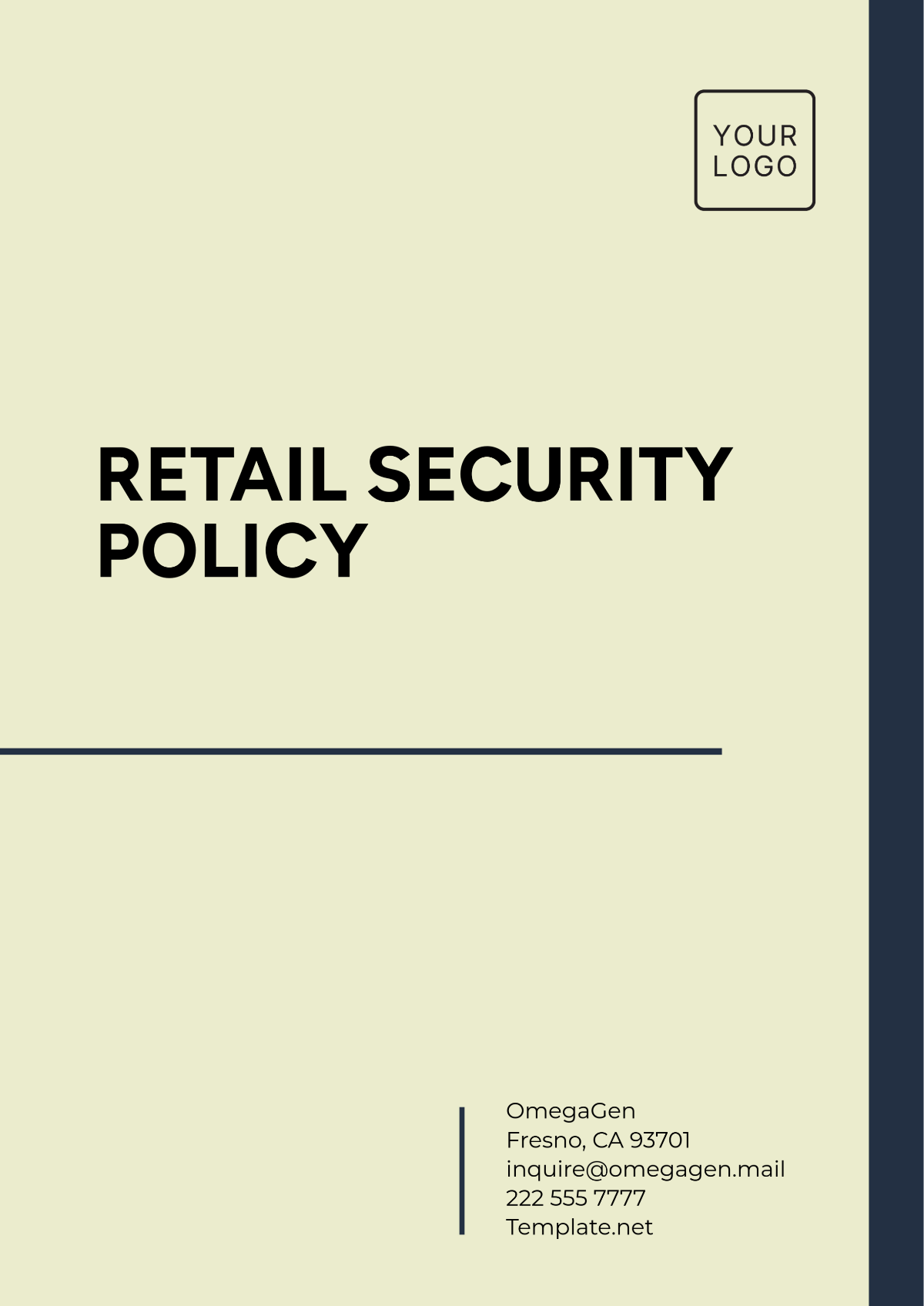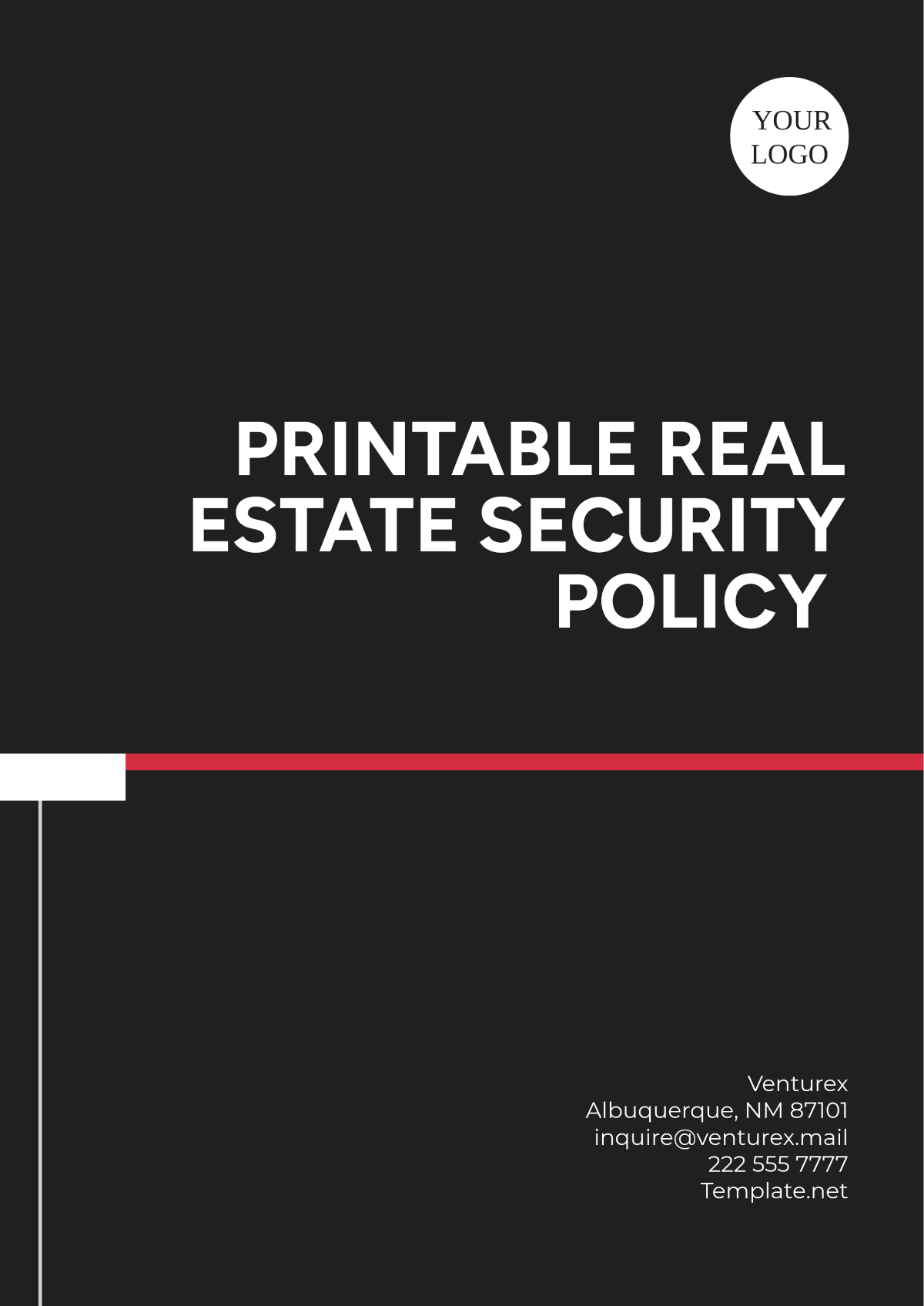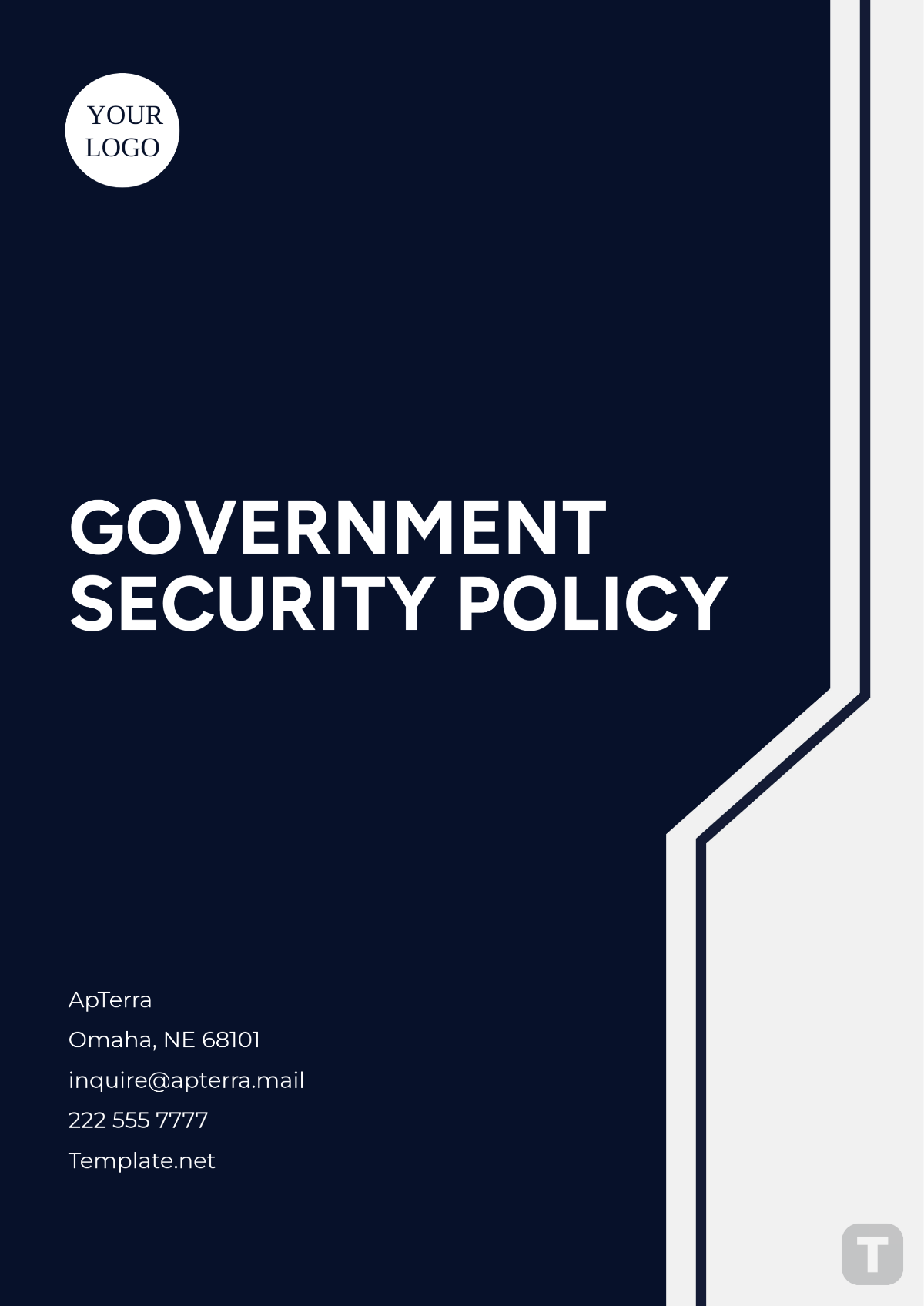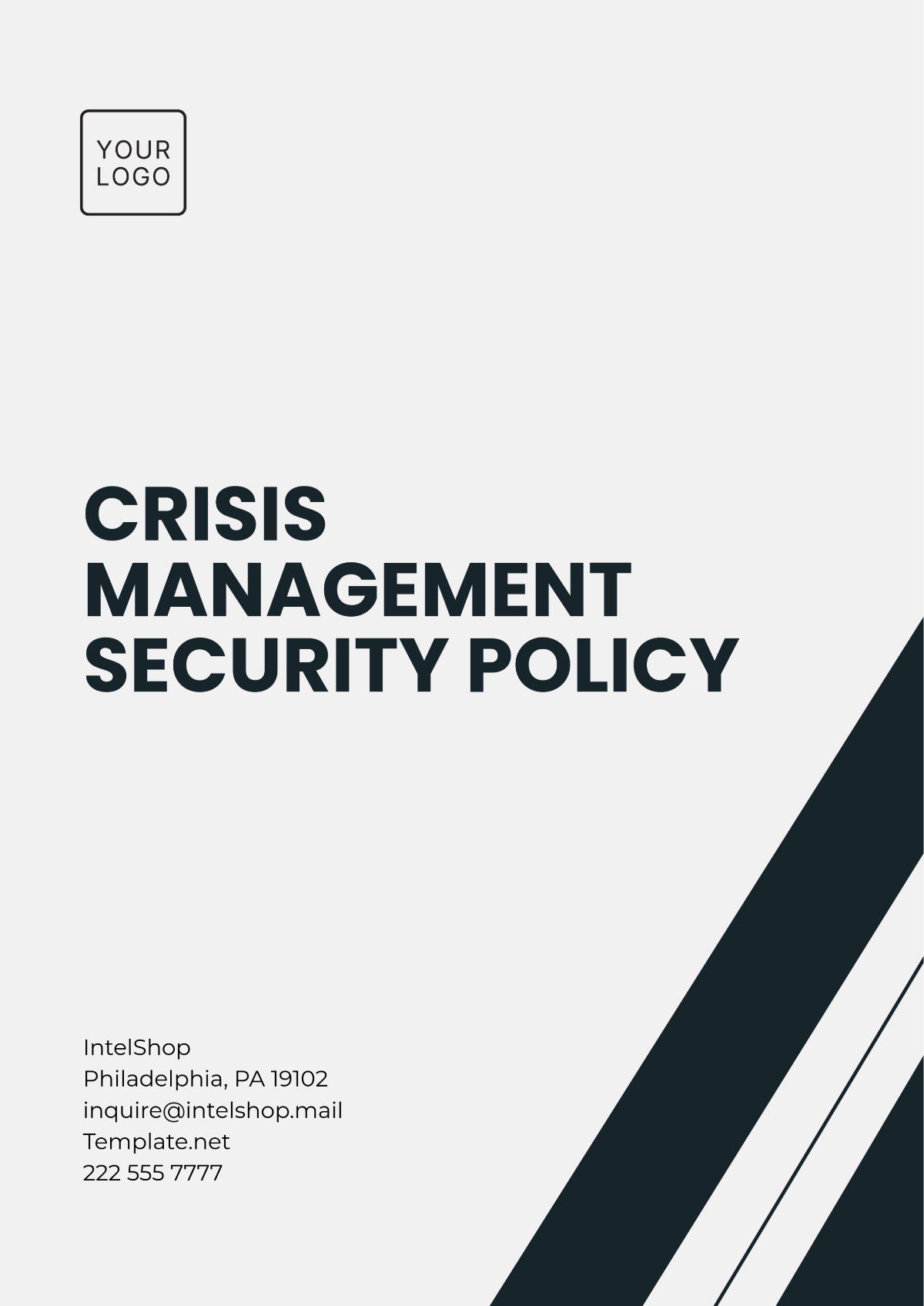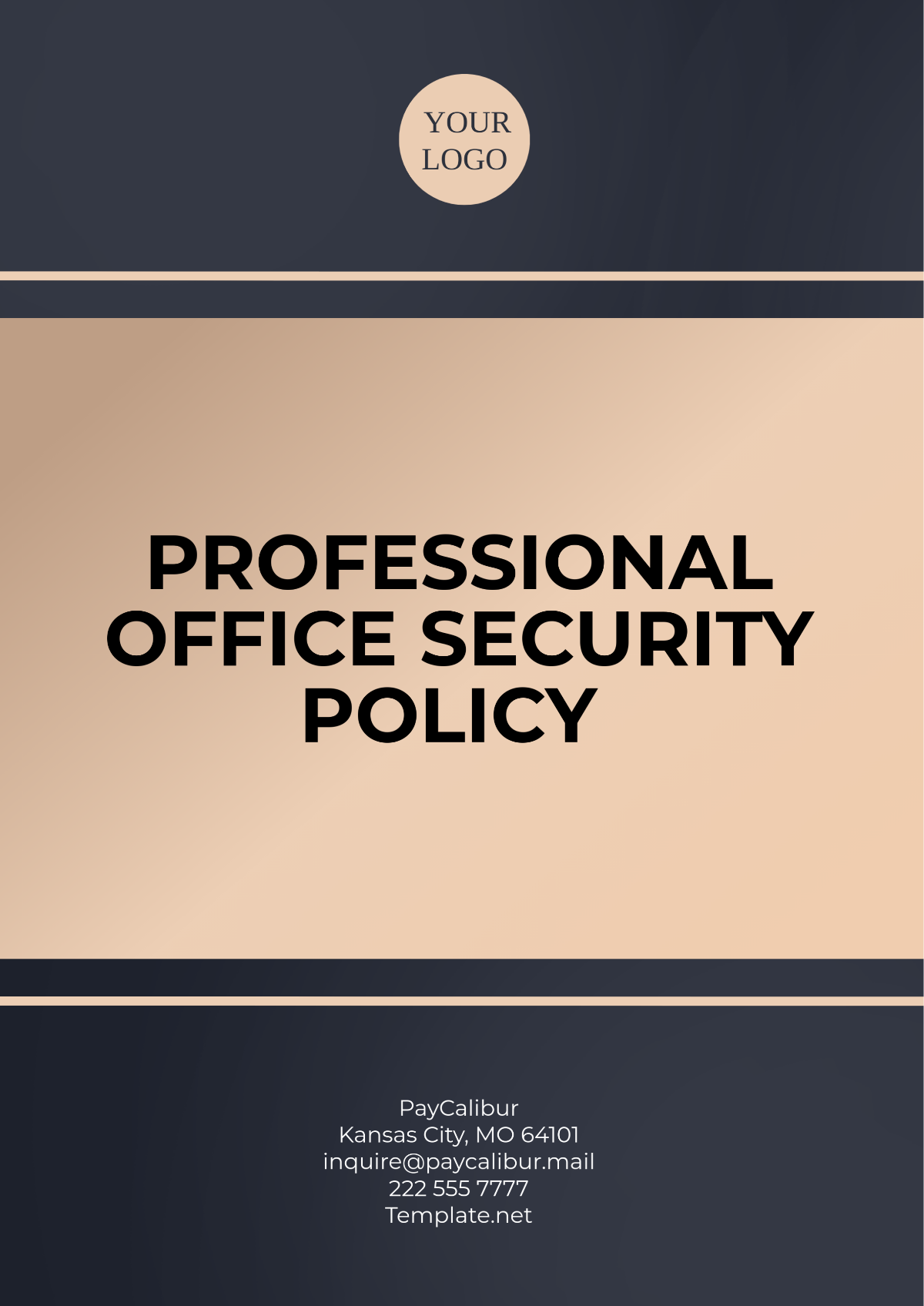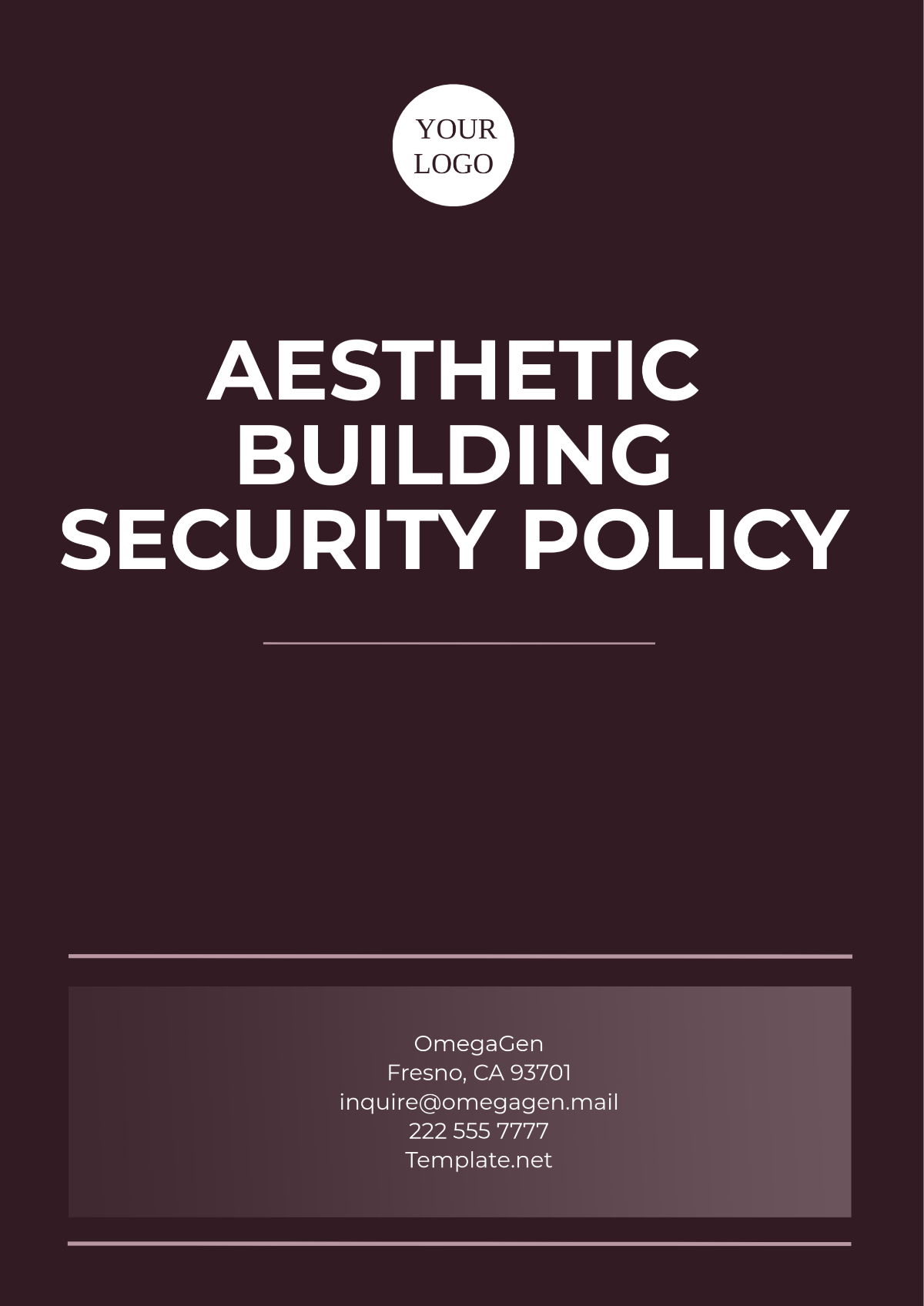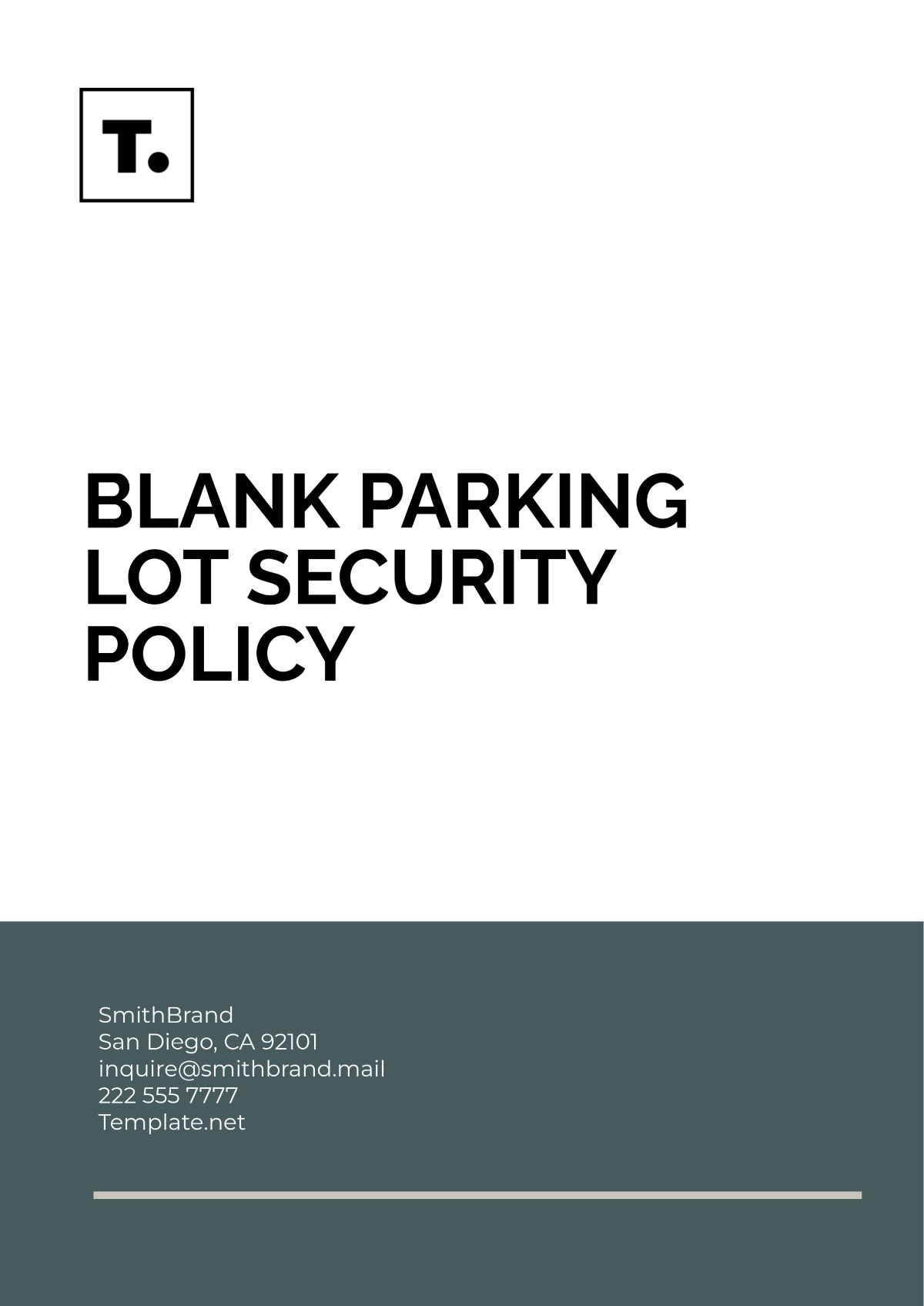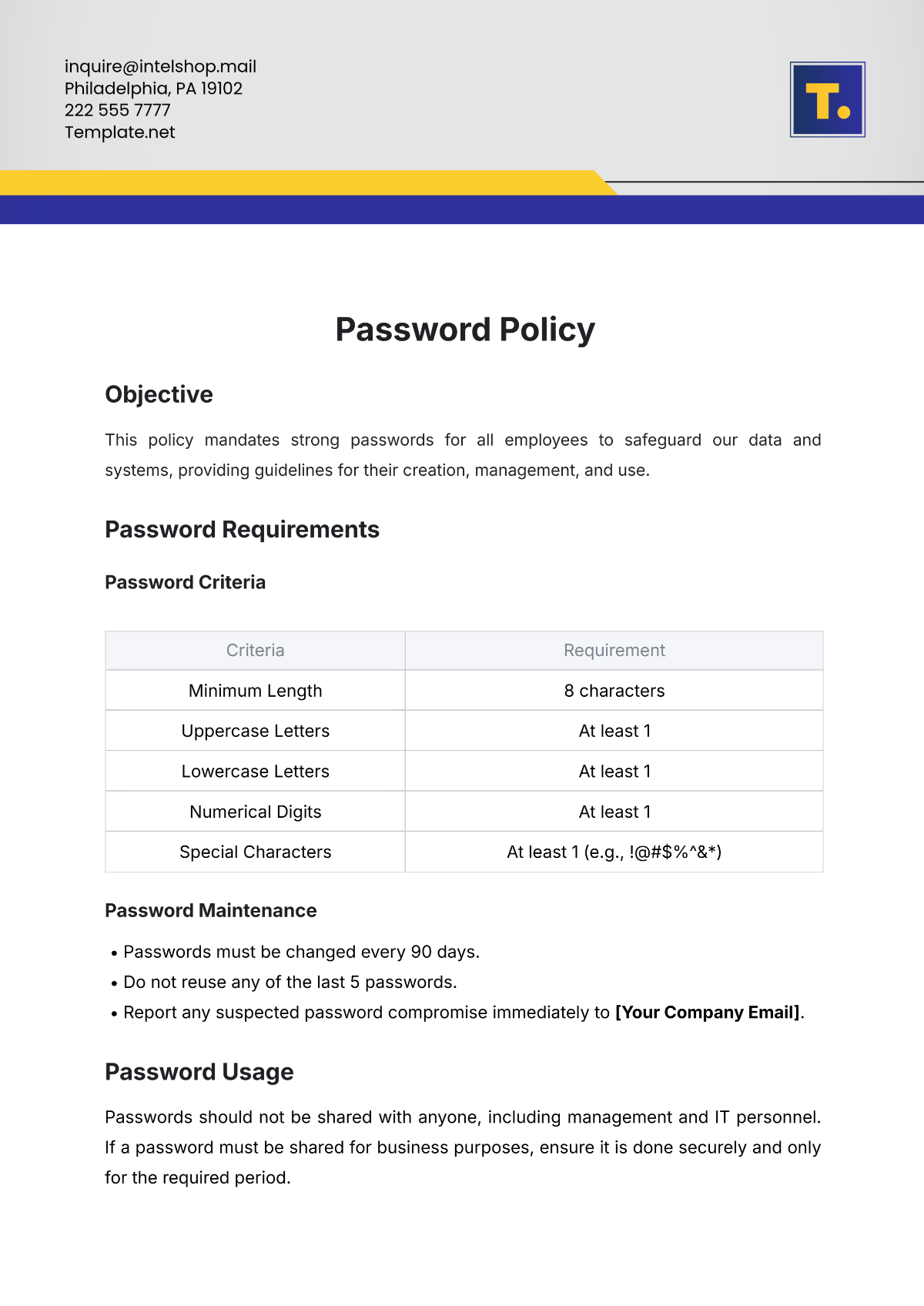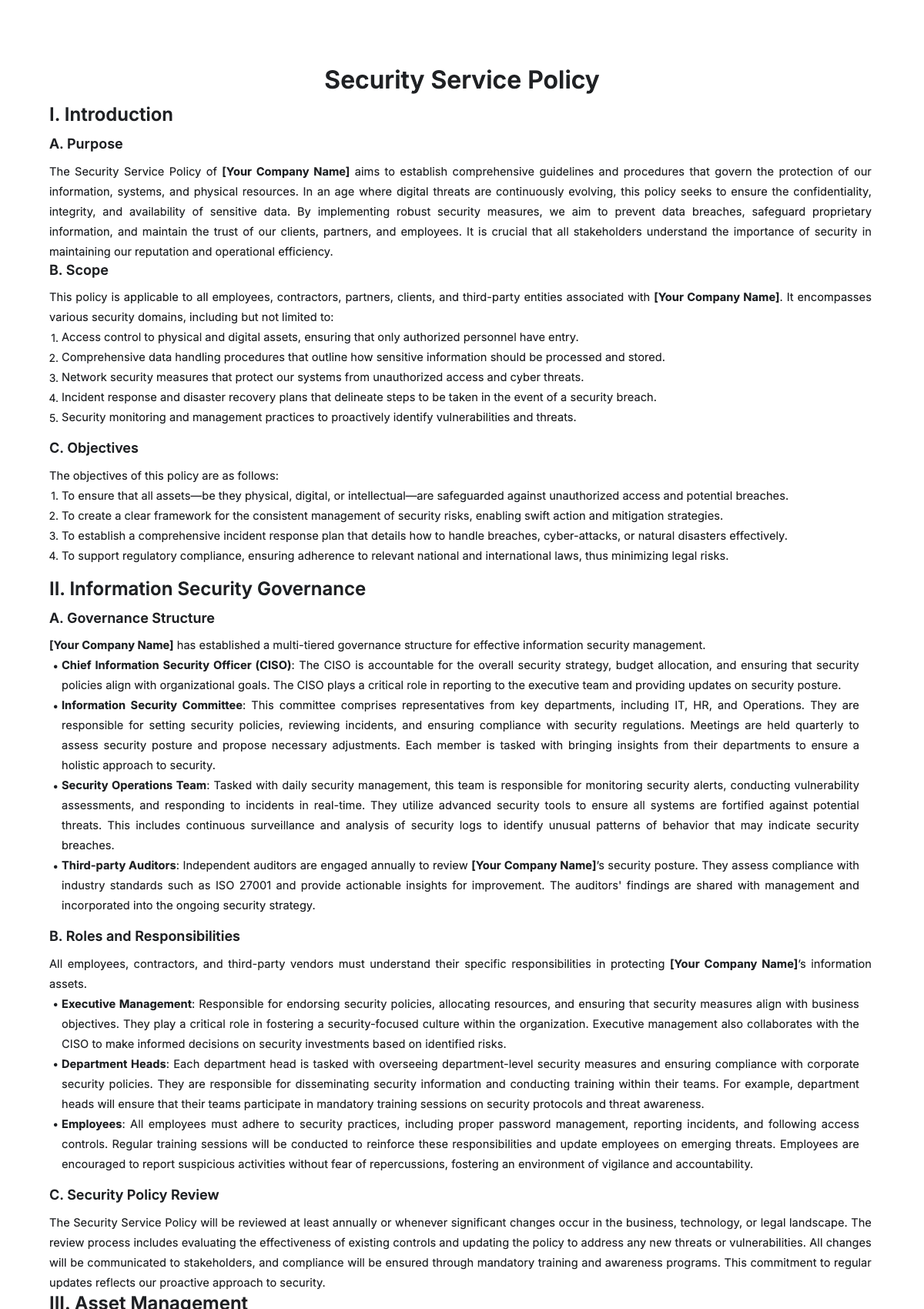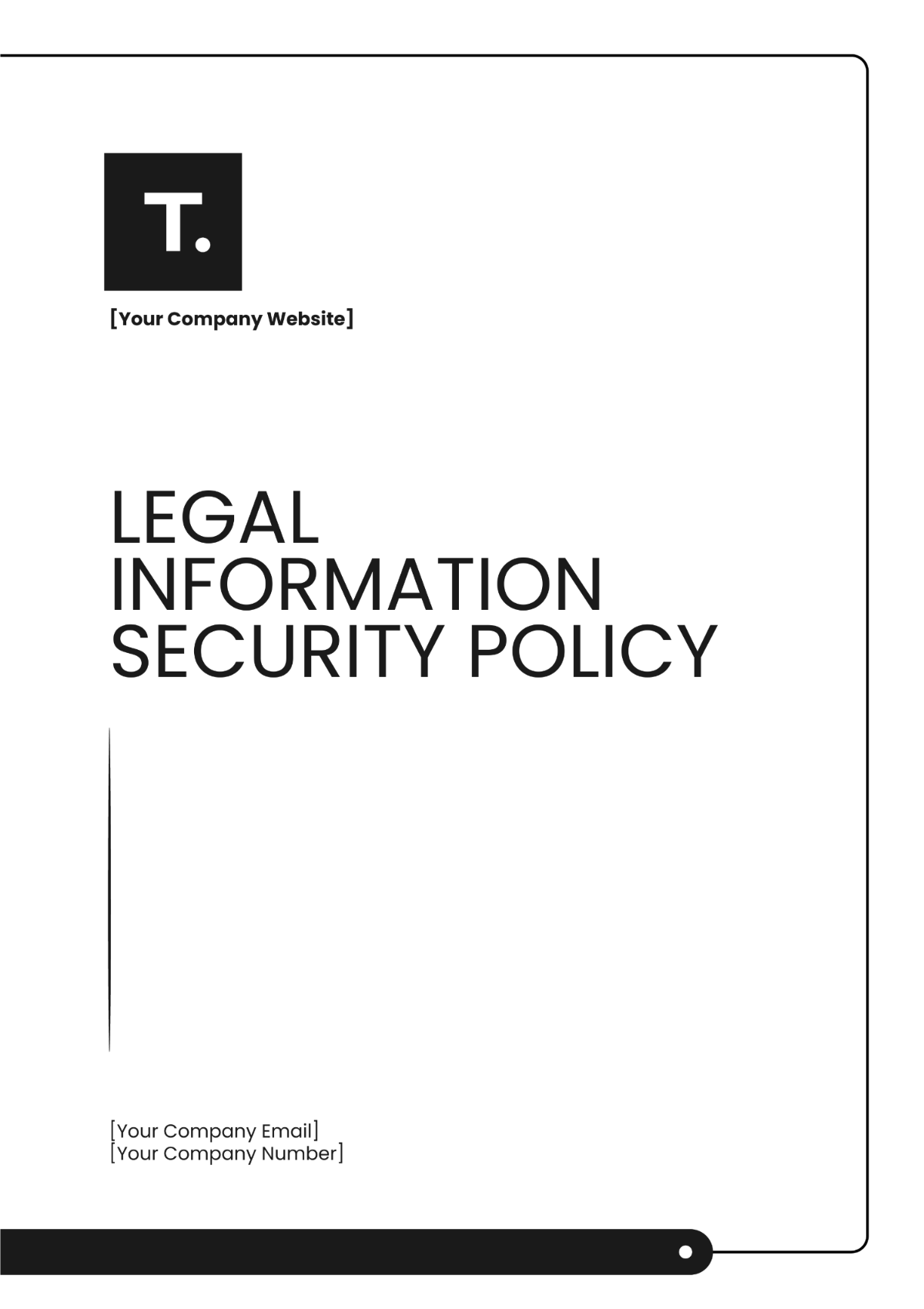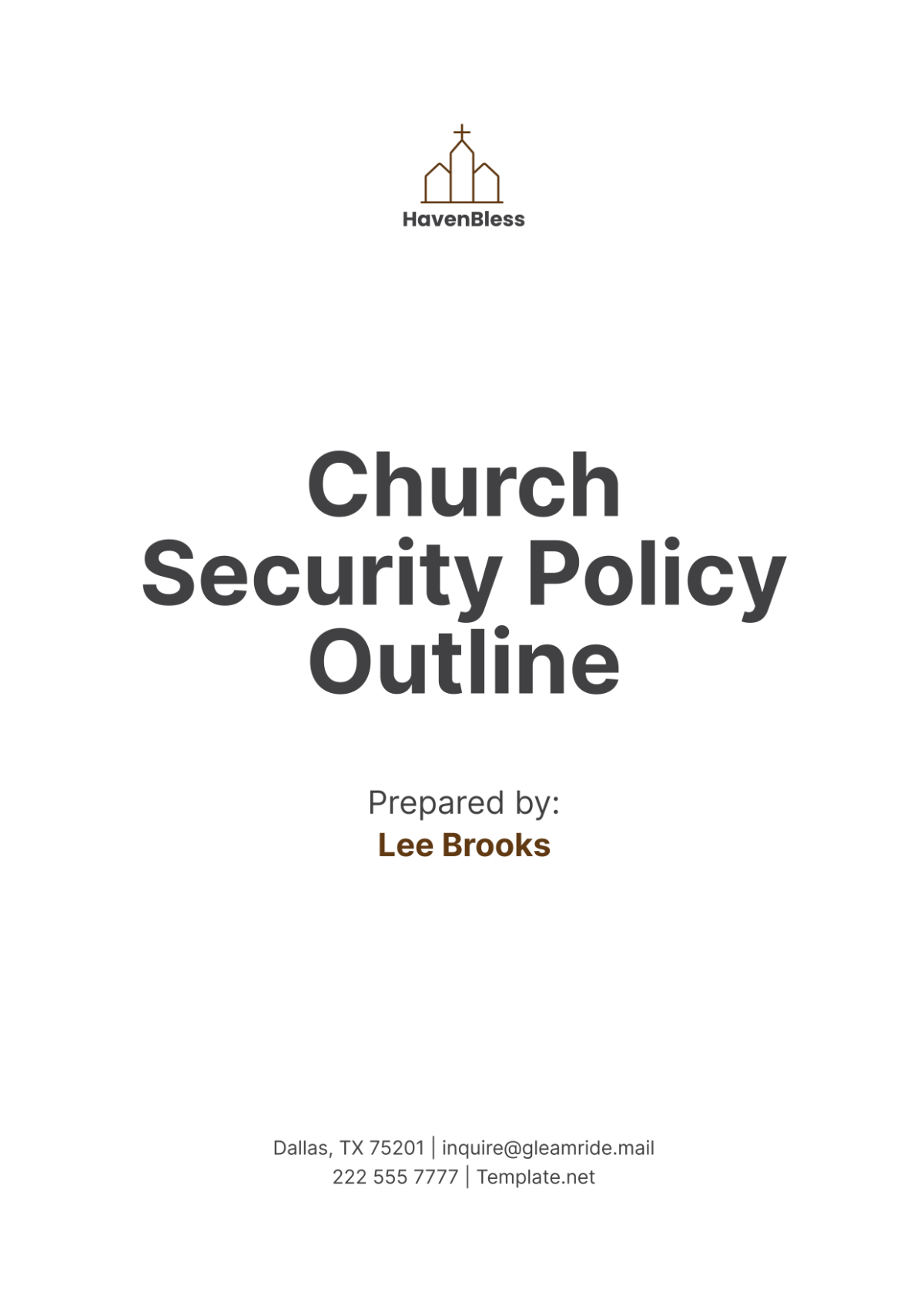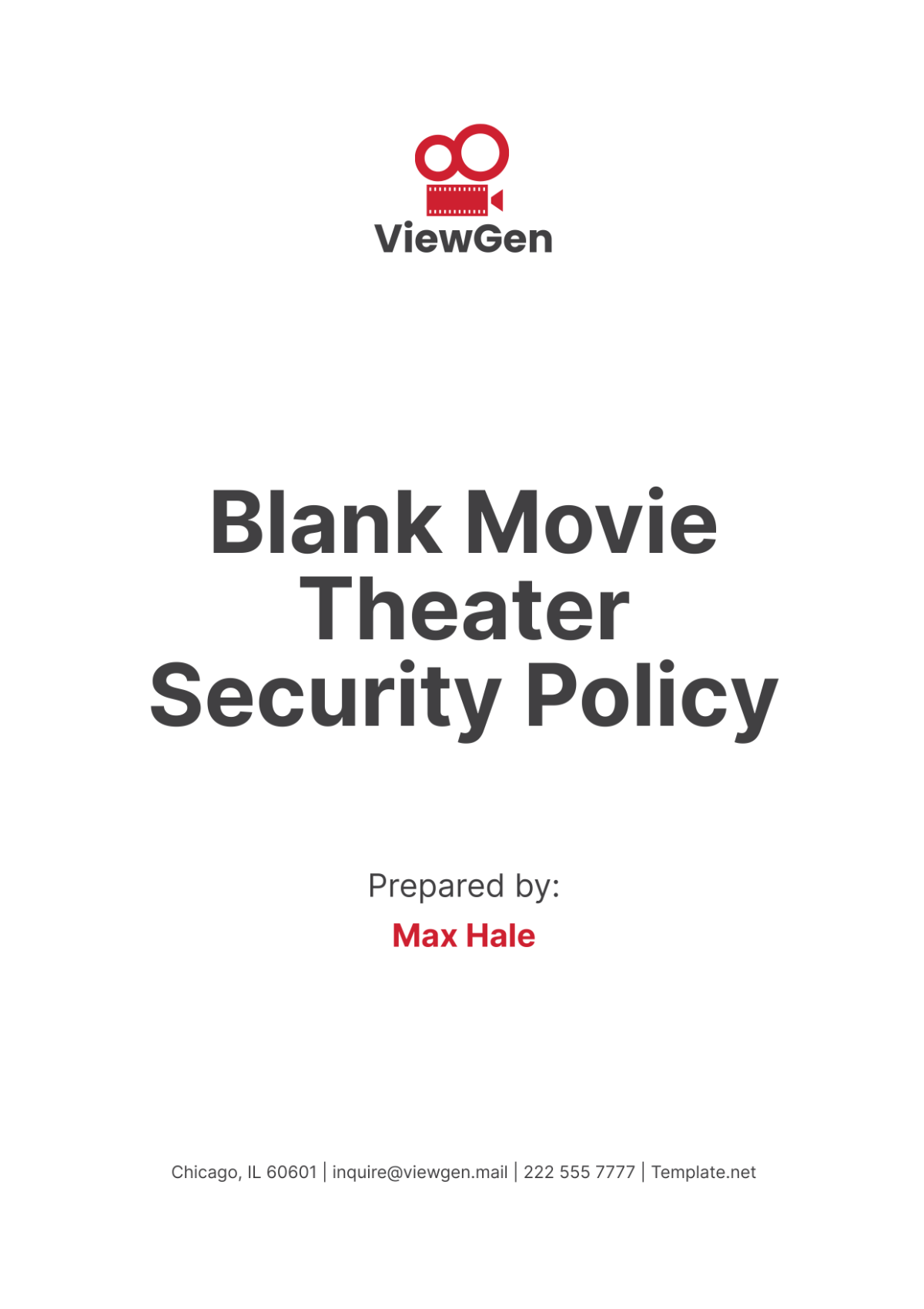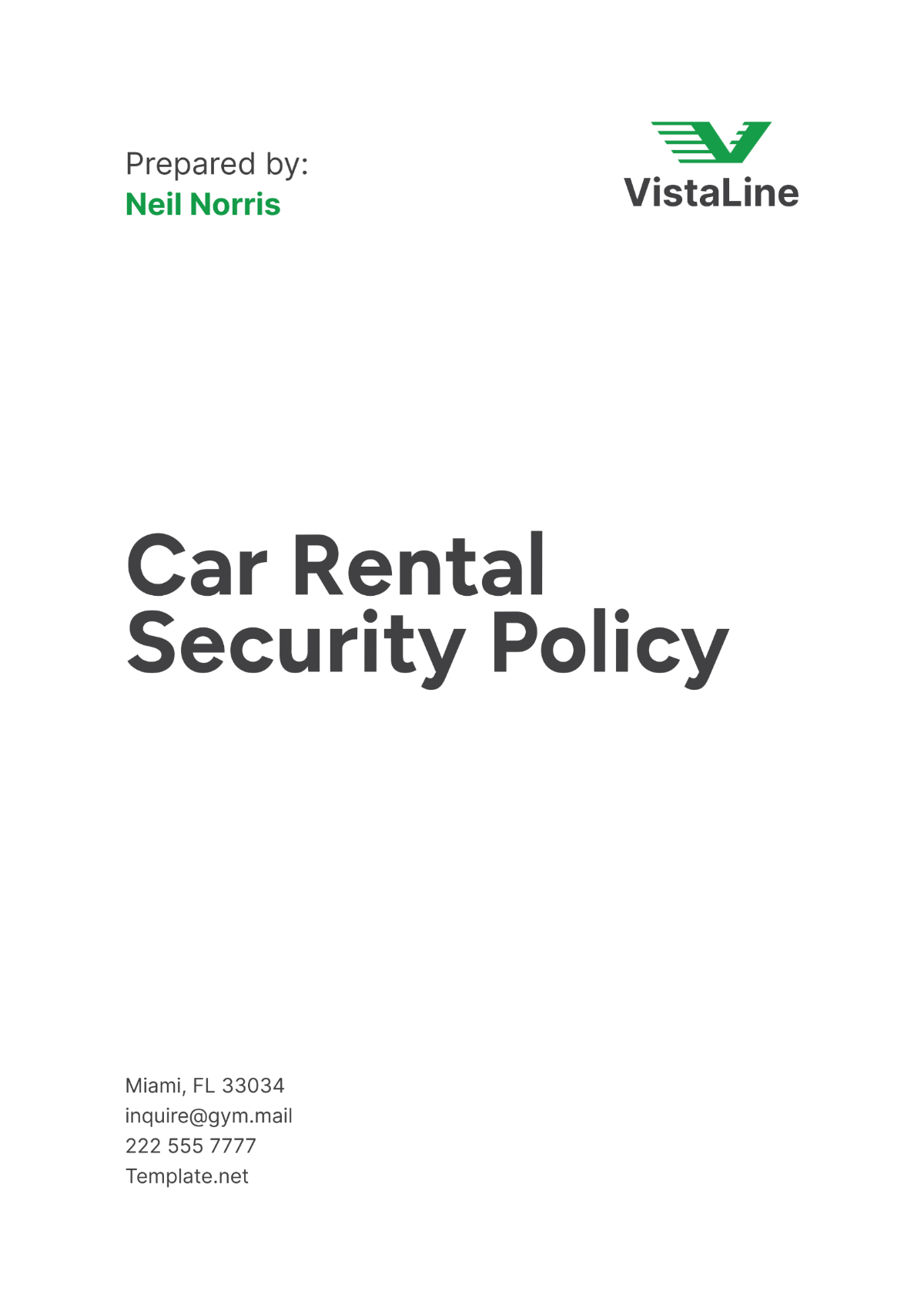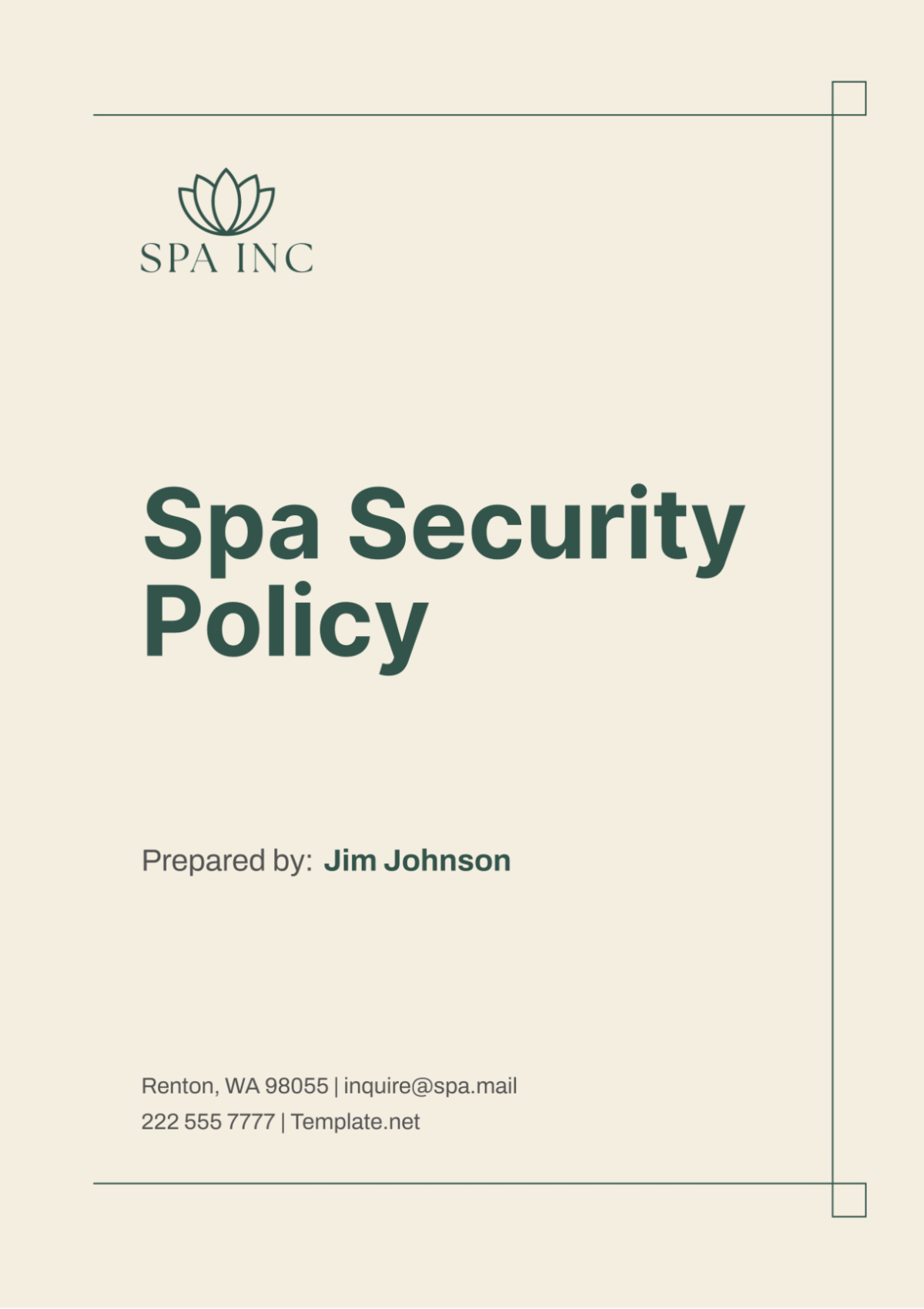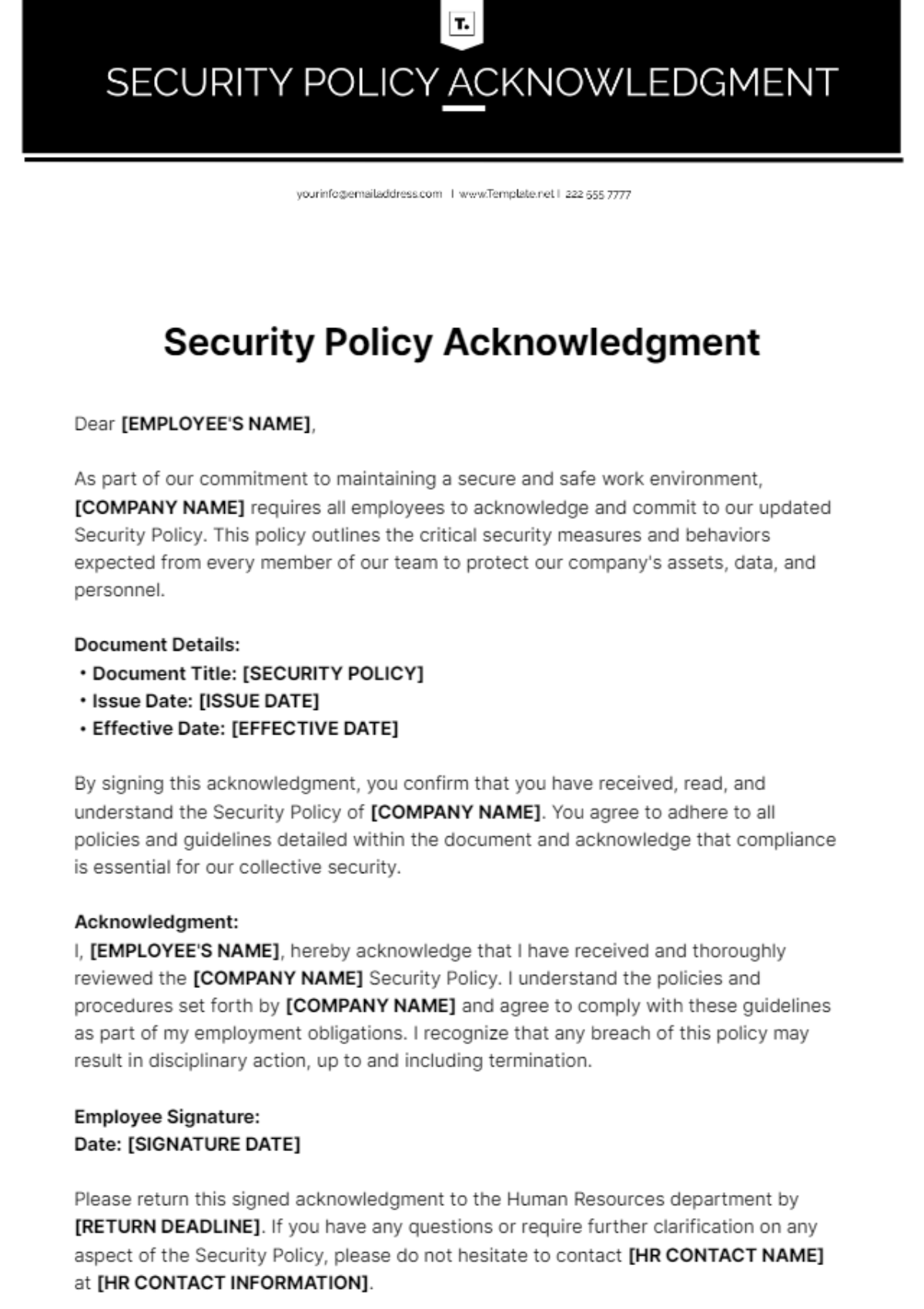Spa Security Policy
I. Introduction
A. Purpose
The purpose of this Spa Security Policy is to establish guidelines and procedures that ensure the safety and security of [Your Company Name], its clients, employees, and assets. By implementing a comprehensive security policy, [Your Company Name] aims to prevent unauthorized access, protect sensitive information, and respond effectively to security incidents. This policy outlines the roles, responsibilities, and measures necessary to maintain a secure environment, fostering a sense of safety and trust among all stakeholders.
At [Your Company Name], we recognize that a secure environment is fundamental to providing excellent service and ensuring the well-being of our clients and staff. This policy serves as a framework for implementing best practices in security, aligning with legal requirements and industry standards. By adhering to these guidelines, we aim to minimize risks, enhance operational efficiency, and promote a culture of vigilance and responsibility.
B. Scope
This Spa Security Policy applies to all facilities, operations, and individuals associated with [Your Company Name]. It encompasses all aspects of physical and data security, including access control, surveillance, data protection, incident response, and employee training. The policy covers:
All physical locations, including spa treatment areas, reception, storage rooms, and employee-only zones.
All employees, contractors, and temporary staff.
All clients and visitors to the spa.
All data systems, including client information, financial records, and employee data.
All equipment, including surveillance systems, alarm systems, and access control mechanisms.
By defining the scope clearly, we ensure that every element of our operations is subject to the same high standards of security. This comprehensive approach helps in identifying vulnerabilities, addressing potential threats, and maintaining a secure environment for everyone involved.
II. Security Roles and Responsibilities
A. Management
Management at [Your Company Name] holds the primary responsibility for ensuring the effective implementation and maintenance of this security policy. Their duties include:
Developing and updating security protocols and procedures.
Allocating resources for security measures, including staff training and equipment.
Conducting regular security audits and assessments to identify and mitigate risks.
Ensuring compliance with legal and regulatory requirements related to security.
Providing leadership and support to foster a culture of security awareness among employees.
Management must lead by example, demonstrating a commitment to security that permeates all levels of the organization. They are responsible for setting clear expectations, monitoring compliance, and taking corrective actions when necessary.
B. Employees
Employees play a crucial role in maintaining the security of [Your Company Name]. Their responsibilities include:
Adhering to all security policies and procedures.
Participating in regular security training and awareness programs.
Reporting any suspicious activity or security incidents immediately.
Ensuring the confidentiality and integrity of client information.
Properly using and maintaining security equipment, such as locks and surveillance systems.
By understanding and fulfilling these responsibilities, employees contribute to a secure and safe environment. Their vigilance and proactive behavior are essential in preventing security breaches and responding effectively to incidents.
C. Security Personnel
If applicable, dedicated security personnel at [Your Company Name] have specific responsibilities, including:
Monitoring surveillance systems and conducting regular patrols of the premises.
Managing access control systems and ensuring only authorized individuals enter restricted areas.
Responding to security incidents and coordinating with law enforcement if necessary.
Conducting regular inspections of security equipment to ensure functionality.
Providing security reports to management and making recommendations for improvements.
Security personnel serve as the first line of defense against potential threats. Their expertise and presence help deter criminal activities and enhance the overall security posture of the spa.
D. Clients
Clients at [Your Company Name] are expected to adhere to certain security expectations to maintain a safe environment. These include:
Respecting the spa’s policies and procedures, including check-in and identification requirements.
Reporting any lost or stolen items immediately to spa management.
Following instructions during emergency situations, such as evacuations.
Respecting the privacy and security of other clients and staff.
By cooperating with the spa’s security measures, clients contribute to a safe and enjoyable experience for themselves and others. Clear communication of these expectations helps in building a mutually respectful relationship between the spa and its clients.
III. Physical Security Measures
A. Access Control
Access control is a fundamental aspect of physical security at [Your Company Name]. It involves regulating who can enter certain areas of the spa, thereby preventing unauthorized access and ensuring the safety of clients and staff. The access control measures include:
Reception Area Protocols: All clients and visitors must check in at the reception area upon arrival. Reception staff will verify appointments and issue identification badges if necessary.
Employee Access: Employees are required to use designated entry points and present their identification badges. Access to sensitive areas, such as storage rooms and employee-only zones, is restricted to authorized personnel only.
Visitor Management: All visitors, including contractors and vendors, must sign in at the reception and be escorted by an authorized employee while on the premises.
Electronic Access Systems: The spa utilizes electronic access control systems, such as keycard entry, to manage access to restricted areas. These systems are regularly monitored and maintained to ensure their functionality.
These measures help create a secure environment by ensuring that only authorized individuals have access to specific areas, thereby reducing the risk of theft, vandalism, and other security breaches.
B. Surveillance Systems
Surveillance systems play a crucial role in monitoring the premises of [Your Company Name]. These systems help deter criminal activities, provide evidence in case of incidents, and enhance the overall security of the spa. The surveillance measures include:
Camera Placement: Surveillance cameras are strategically placed in key areas, including the reception, treatment rooms, hallways, and exterior entrances. This ensures comprehensive coverage of the premises.
Monitoring: Security personnel or designated staff members monitor live feeds from the surveillance cameras. This allows for immediate detection and response to suspicious activities.
Recording and Storage: All surveillance footage is recorded and stored for a specific period, as per legal and regulatory requirements. This footage is accessible only to authorized personnel and is used for investigation purposes if needed.
Regular Maintenance: Surveillance equipment is regularly inspected and maintained to ensure optimal performance. Any malfunctioning equipment is promptly repaired or replaced.
The use of advanced surveillance systems enhances the ability of [Your Company Name] to detect and respond to security threats, thereby ensuring a safe environment for clients and staff.
C. Alarm Systems
Alarm systems are an integral part of the security infrastructure at [Your Company Name]. These systems provide an immediate alert in case of unauthorized access, emergencies, or other security incidents. The alarm system measures include:
Intrusion Alarms: Intrusion alarms are installed at all entry and exit points, as well as in sensitive areas. These alarms activate when unauthorized access is detected, alerting security personnel and local law enforcement if necessary.
Emergency Alarms: Emergency alarms, such as fire alarms and panic buttons, are installed throughout the spa. These alarms provide immediate alerts in case of emergencies, ensuring a swift response.
Alarm Monitoring: All alarm systems are connected to a central monitoring station, which operates 24/7. Trained personnel at the monitoring station respond to alarm activations and coordinate with security personnel and emergency services.
System Testing: Alarm systems are regularly tested to ensure they are functioning correctly. Any issues identified during testing are promptly addressed.
By implementing robust alarm systems, [Your Company Name] ensures that any security incident is quickly detected and responded to, minimizing potential harm and damage.
D. Locking Mechanisms
Effective locking mechanisms are essential for securing the premises of [Your Company Name]. These mechanisms prevent unauthorized access and protect valuable assets. The locking mechanisms include:
High-Security Locks: All entry and exit points are equipped with high-security locks. These locks are resistant to tampering and provide a high level of security.
Key Management: A strict key management policy is in place to control the distribution and use of keys. Only authorized personnel are issued keys, and a record of key issuance and return is maintained.
Electronic Locks: In addition to traditional locks, electronic locks are used for sensitive areas. These locks require keycards or biometric authentication for access.
Lock Maintenance: All locks are regularly inspected and maintained to ensure their functionality. Any damaged or malfunctioning locks are promptly repaired or replaced.
By employing a combination of high-security and electronic locks, [Your Company Name] ensures that all areas of the spa are well-protected against unauthorized access.
IV. Data Security
A. Client Information
Protecting client information is a top priority at [Your Company Name]. We implement stringent measures to ensure the confidentiality, integrity, and availability of client data. These measures include:
Data Encryption: All client data, including personal information and treatment records, is encrypted both in transit and at rest. This ensures that data remains secure from unauthorized access and breaches.
Access Controls: Access to client data is restricted to authorized personnel only. Employees are granted access based on their roles and responsibilities, ensuring that sensitive information is only accessible to those who need it.
Data Backup: Regular backups of client data are performed to prevent data loss. These backups are stored securely, both on-site and off-site, ensuring data availability in case of system failures or disasters.
Privacy Policies: Clear privacy policies are in place to inform clients about how their data is collected, used, and protected. Clients are also given the option to consent to the use of their data for specific purposes.
By implementing these measures, [Your Company Name] ensures that client information is handled with the highest level of care and protection.
B. Financial Data
Securing financial data is crucial for maintaining the integrity of [Your Company Name]'s operations and ensuring client trust. The financial data security measures include:
Secure Payment Systems: All financial transactions are processed using secure payment systems that comply with industry standards and regulations. These systems employ encryption and other security measures to protect payment information.
Access Controls: Access to financial data is restricted to authorized personnel only. Employees handling financial transactions are trained in security protocols and best practices.
Regular Audits: Regular financial audits are conducted to detect and address any discrepancies or potential security issues. These audits help in maintaining the integrity of financial records.
Fraud Detection: Advanced fraud detection systems are used to monitor financial transactions for suspicious activity. Any potential fraud is promptly investigated and addressed.
By ensuring the security of financial data, [Your Company Name] maintains the trust of its clients and protects its financial integrity.
C. Employee Records
Protecting employee records is essential for maintaining a secure and compliant workplace at [Your Company Name]. The employee data security measures include:
Confidentiality Agreements: All employees are required to sign confidentiality agreements that outline their responsibilities in protecting sensitive information.
Access Controls: Access to employee records is restricted to authorized personnel only. Human resources and management staff have access based on their roles and responsibilities.
Data Encryption: Employee records, including personal information and employment history, are encrypted to prevent unauthorized access and breaches.
Data Retention Policies: Clear data retention policies are in place to ensure that employee records are retained and disposed of in compliance with legal and regulatory requirements.
By implementing these measures, [Your Company Name] ensures that employee records are handled with the highest level of care and protection.
D. Data Breach Response
In the event of a data breach, [Your Company Name] has a comprehensive response plan to minimize the impact and prevent future incidents. The data breach response measures include:
Immediate Containment: Upon detecting a data breach, immediate steps are taken to contain the breach and prevent further unauthorized access. This may involve disconnecting affected systems and changing access credentials.
Investigation: A thorough investigation is conducted to determine the cause and extent of the breach. This involves analyzing system logs, interviewing relevant personnel, and identifying vulnerabilities.
Notification: Affected individuals are promptly notified of the breach, along with information about the nature of the breach and the steps being taken to address it. Legal and regulatory requirements for breach notification are followed.
Corrective Actions: Measures are taken to address the vulnerabilities that led to the breach and prevent future incidents. This may involve updating security protocols, implementing additional security measures, and providing additional training to employees.
By having a robust data breach response plan, [Your Company Name] ensures that any breach is quickly and effectively addressed, minimizing the impact on clients and employees.
V. Incident Response
A. Reporting Procedures
Effective incident response starts with clear and efficient reporting procedures. At [Your Company Name], all security incidents, regardless of their nature or severity, must be reported immediately. The reporting procedures include:
Reporting Procedures | Details |
|---|---|
Internal Reporting | Employees must report any suspicious activity, security breaches, or emergencies to their immediate supervisor or designated security personnel. |
Incident Report Form | An Incident Report Form must be completed for all security incidents. This form includes details such as the date and time of the incident, individuals involved, a description of the incident, and any immediate actions taken. |
Client Reporting | Clients are encouraged to report any security concerns or lost items to the reception staff. Clear instructions for reporting are provided to clients upon check-in. |
Anonymous Reporting | To encourage reporting of suspicious activities, [Your Company Name] provides an anonymous reporting mechanism. This allows employees and clients to report concerns without fear of retaliation. |
By establishing clear reporting procedures, [Your Company Name] ensures that security incidents are promptly identified and addressed, minimizing potential harm and damage.
B. Investigation Process
Once a security incident is reported, a thorough investigation is conducted to determine the cause, extent, and impact of the incident. The investigation process includes:
Investigation Process | Details |
|---|---|
Initial Assessment | Gathering preliminary information about the incident, including the time, location, and individuals involved. This helps in understanding the nature and scope of the incident. |
Evidence Collection | Evidence is collected to support the investigation. This may include surveillance footage, access logs, witness statements, and any physical evidence related to the incident. |
Analysis | The collected evidence is analyzed to identify the cause of the incident, any vulnerabilities that were exploited, and the impact on clients, employees, and assets. |
Report Preparation | A detailed incident report is prepared, documenting the findings of the investigation. This report includes recommendations for corrective actions and preventive measures. |
The investigation process ensures that all security incidents are thoroughly examined, providing insights into how similar incidents can be prevented in the future.
C. Corrective Actions
Based on the findings of the investigation, corrective actions are implemented to address the vulnerabilities and prevent future incidents. The corrective actions include:
Corrective Actions | Details |
|---|---|
Policy Updates | Security policies and procedures are reviewed and updated to address any gaps identified during the investigation. |
Security Enhancements | Additional security measures, such as upgrading surveillance systems, improving access controls, or increasing the presence of security personnel, are implemented as needed. |
Employee Training | Employees are provided with additional training on security protocols and best practices, emphasizing the lessons learned from the incident. |
Follow-Up Assessments | Follow-up assessments are conducted to ensure that the corrective actions are effective and that no further incidents occur. |
VI. Security Awareness Training
A. Employee Training Programs
At [Your Company Name], we prioritize security awareness through comprehensive training programs for all employees. These programs are designed to equip staff with the knowledge and skills necessary to maintain a secure environment for our clients and colleagues. Training programs include:
Orientation Training: All new hires undergo orientation training that covers basic security protocols, company policies, and their role in maintaining security. This training ensures that employees understand the importance of security from their first day on the job.
Ongoing Training: Regular training sessions are held to update employees on the latest security threats, new protocols, and any changes in company policies. This includes workshops, seminars, and online courses tailored to different roles within the company.
Specialized Training: Employees in specific roles, such as receptionists, security personnel, and IT staff, receive specialized training relevant to their responsibilities. This includes advanced security techniques, handling sensitive information, and emergency response procedures.
By implementing a robust training program, [Your Company Name] ensures that all employees are well-prepared to contribute to a secure environment.
B. Client Education
Educating our clients about security measures and their role in maintaining a safe spa environment is a key component of our security strategy. Client education includes:
Welcome Briefings: Upon check-in, clients receive a brief orientation on the spa's security measures and their responsibilities. This includes information on how to keep personal belongings secure and what to do in case of an emergency.
Informational Materials: Clients are provided with brochures and pamphlets that outline the spa's security policies, emergency procedures, and tips for staying safe. These materials are available in multiple languages to cater to our diverse clientele.
Workshops and Seminars: Periodic workshops and seminars are held to educate clients on wellness and security topics. These sessions cover subjects such as personal safety, digital security, and the benefits of maintaining a secure environment.
By involving clients in our security efforts, [Your Company Name] fosters a cooperative atmosphere where everyone plays a part in maintaining safety.
VII. Security Audits and Assessments
A. Regular Security Audits
To ensure the effectiveness of our security measures, [Your Company Name] conducts regular security audits. These audits involve a thorough review of all security protocols, systems, and practices. Key components of our security audits include:
Physical Security: Inspections of the spa’s physical infrastructure, including access controls, surveillance systems, and security personnel deployment. Auditors check for any vulnerabilities and recommend improvements.
Data Security: Evaluation of the spa’s data protection measures, including encryption, access controls, and data storage practices. Audits ensure that all client and employee information is securely managed.
Compliance: Review of compliance with industry standards, regulations, and company policies. Auditors verify that all security measures align with legal requirements and best practices.
By conducting regular security audits, [Your Company Name] identifies and addresses potential security gaps, ensuring ongoing protection for clients and staff.
B. Vulnerability Assessments
In addition to regular audits, [Your Company Name] performs vulnerability assessments to identify and mitigate specific security threats. These assessments focus on:
Threat Identification: Identifying potential security threats based on current trends, historical incidents, and expert analysis. This includes both physical and digital threats.
Risk Analysis: Evaluating the potential impact of identified threats on the spa’s operations, clients, and employees. This helps prioritize which vulnerabilities need immediate attention.
Mitigation Strategies: Developing and implementing strategies to mitigate identified risks. This includes updating security protocols, enhancing physical and digital security measures, and training employees on new threats.
Through comprehensive vulnerability assessments, [Your Company Name] proactively addresses security risks, minimizing the likelihood of incidents.
VIII. Emergency Response Procedures
A. Emergency Preparedness
Emergency preparedness is a critical aspect of [Your Company Name]'s security policy. Our approach to emergency preparedness includes:
Emergency Plans: Detailed emergency plans are developed for various scenarios, including fire, natural disasters, medical emergencies, and security breaches. These plans outline specific steps to be taken by employees and clients during an emergency.
Training and Drills: Regular training sessions and drills are conducted to ensure that all employees are familiar with emergency procedures. This includes evacuation drills, first aid training, and crisis management exercises.
Emergency Supplies: Emergency supplies, such as first aid kits, fire extinguishers, and emergency communication devices, are strategically placed throughout the spa. These supplies are regularly checked and maintained to ensure they are in good working order.
By being well-prepared for emergencies, [Your Company Name] ensures the safety and well-being of clients and employees.
B. Response Protocols
In the event of an emergency, [Your Company Name] has established response protocols to ensure a swift and effective reaction. These protocols include:
Immediate Actions: Clear guidelines on the immediate actions to be taken by employees and clients during an emergency. This includes evacuation routes, assembly points, and communication procedures.
Emergency Teams: Designated emergency response teams are trained to handle different types of emergencies. These teams include fire wardens, medical response teams, and security personnel.
Communication: Effective communication is crucial during an emergency. [Your Company Name] has established communication protocols to ensure that all relevant parties are informed and coordinated. This includes internal communication among staff and external communication with emergency services.
By having well-defined response protocols, [Your Company Name] ensures a coordinated and efficient reaction to emergencies.
IX. Security Technology
A. Surveillance Systems
[Your Company Name] utilizes advanced surveillance systems to monitor and secure the spa’s premises. Our surveillance systems include:
CCTV Cameras: High-resolution CCTV cameras are strategically placed throughout the spa to monitor key areas, including entrances, exits, and high-traffic zones. These cameras operate 24/7 and are equipped with night vision capabilities.
Monitoring: Surveillance footage is continuously monitored by trained security personnel. Any suspicious activity is promptly investigated, and appropriate actions are taken.
Data Storage: Surveillance footage is securely stored and retained for a specified period in compliance with legal requirements. Access to stored footage is restricted to authorized personnel only.
B. Access Control Systems
To enhance security, [Your Company Name] employs advanced access control systems. These systems regulate entry to the spa and restrict access to sensitive areas. Key components of our access control systems include:
Key Card Entry: Employees and clients are issued key cards that grant access to authorized areas. Key card systems track and record entry and exit times, providing a detailed log of access activity.
Biometric Systems: For high-security areas, biometric systems, such as fingerprint and facial recognition scanners, are used. These systems ensure that only authorized personnel can access restricted zones.
Visitor Management: A visitor management system is in place to monitor and control the entry of visitors. Visitors are required to sign in, and their access is limited to designated areas.
By implementing robust access control systems, [Your Company Name] ensures that only authorized individuals have access to the spa’s facilities and sensitive areas.


